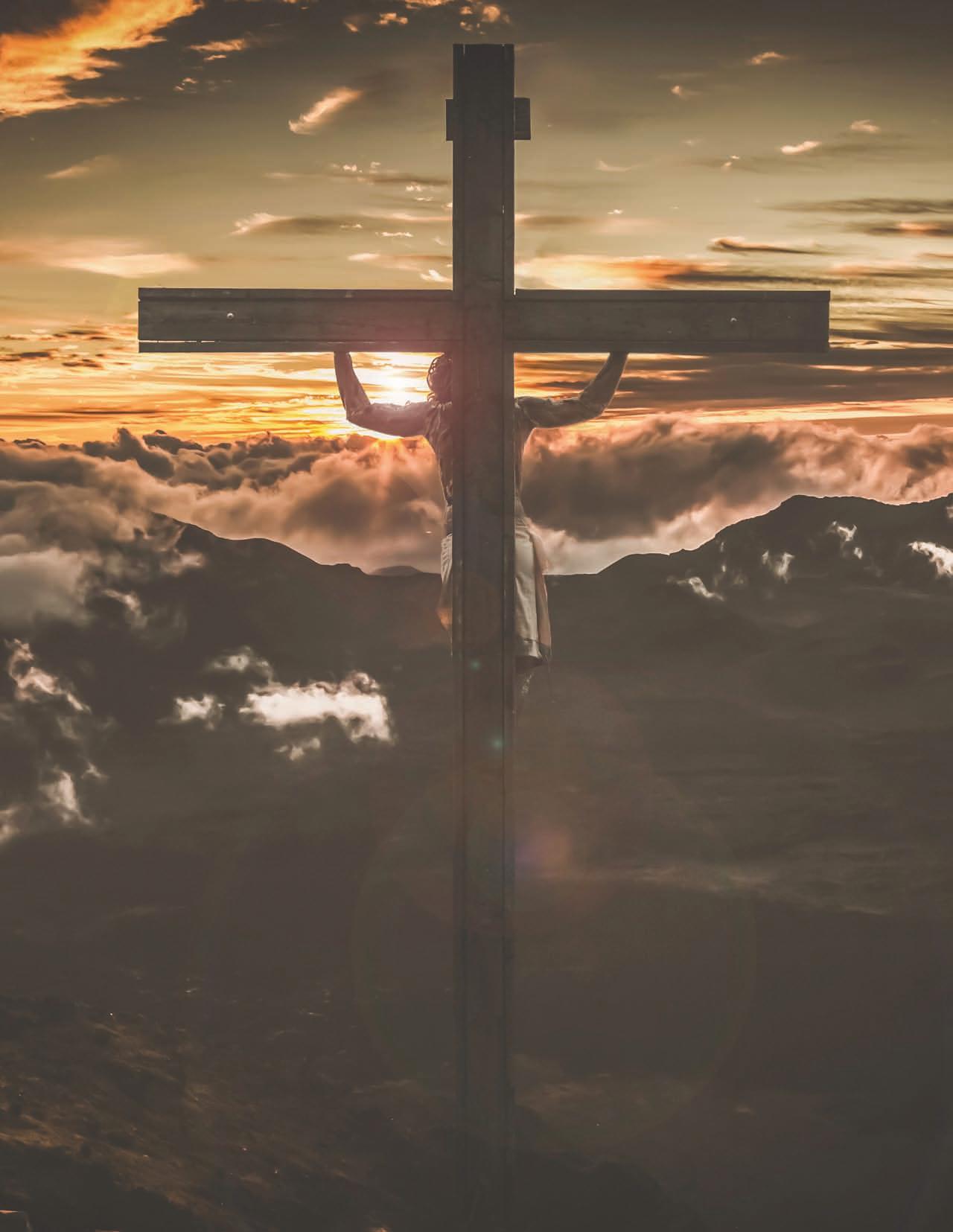

IN HOC SIGNO VINCES



IN HOC SIGNO VINCES
Spring 2024
UTICA COMMANDERY CELEBRATES 200 YEARS
THE SHORTEST TEMPLAR
DAVID and SOLOMON
LAFAYETTE’S TEMPLARY IN AMERICA
HERMETECISM AND THE GEOMETRY OF TIME

The 94th Annual Easter Sunrise Service, sponsored by the Grand Encampment of Knights Templar, will again be held on the steps of the George Washington Masonic National Memorial in Alexandria, Virginia, on Sunday, March 31, 2024.
The Crystal Gateway Marriott, 1700 Richmond Highway, Arlington, Virginia, is our headquarters hotel. The special Knights Templar rate will be $129.00 per room, based on double occupancy. Parking rate is $28.00, per night. Please make your reservations directly with the hotel by calling 703-920-3230 (mention Grand Encampment of Knights Templar). A hotel reservation link is available on our website at: www.knightstemplar.org.
A meal package is available for $75.00 per person and includes Saturday evening dinner and Sunday morning breakfast buffet. Order your meal tickets from the Grand Encampment office. Registration forms are available online at www.knightstemplar.org for credit card processing, or mail your check, payable to the Grand Encampment, to 3 Sugar Creek Center Blvd, Suite 410, Sugar Land, TX 77478. Additional tickets may be ordered separately; Saturday dinner, $60.00; Sunday breakfast buffet, $20.00. Reserved seating at the Saturday night dinner will be assigned on a first come first served basis. If you would like to be seated together, please send in your payment as a group.
Note: The hotel and meal ticket cutoff date is March 1, 2024. No tickets will be sold at the door.
Grand Commanders and their ladies are invited to attend the Saturday evening dinner, courtesy of the Grand Encampment. Prior reservations are required with the Grand Encampment office.
Breakfast buffet – 5:15 a.m. to 6:15 a.m.
Buses begin to leave hotel – 6:30 a.m.
Parade will step off at 7:40 a.m.
Easter Memorial Service – 8:00 a.m.
Buses return to the hotel after the service at approximately 9:30 a.m.
Grand Commanders are requested to appoint a delegation chairman and notify Sir Knight Lawrence E. Tucker, R:E: Grand Recorder, 3 Sugar Creek Center Blvd, Suite 410, Sugar Land, TX 77478, Phone: 713-349-8700, Fax: 713-349-8710, E-mail: john@gektusa.org.
3 Sugar Creek Center Blvd, Suite 410
Sugar Land, TX 77478
Tel: 713-349-8700 Fax: 713-349-8710
A Grand Encampment Easter Meal Package is available at $75.00 per person. Individual tickets are available for Dinner ($60) and Breakfast ($20).











Please send enclosed form with your check payable to: “Grand Encampment”
To pay by Credit Card please provide the following information.




To the Sir Knights of the Grand Encampment of Knights Templar Greetings in the name of our Lord, Jesus Christ!
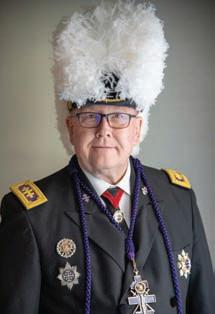
For the many years that I have read and studied the Holy Bible, especially during the Easter season, one aspect of this blessed event has been my appreciation of the divine relationship that came to exist between Jesus and the Centurion.
There was only one person who was constantly with Jesus in the last sixteen or so hours of His life. It was not His mother, Mary, as much as she wanted to be. It was not many of His disciples. Remember: most of them had run away. A few followed at a distance. Only one made it to the cross.
The person close to Jesus from His arrest until His burial was someone who did not choose to be there. He was there because it was his duty, his job, his assignment. That person was the Roman centurion. We find the story in Mark 15.
The centurion began by following orders – fulfilling his job requirements without the remotest idea that something amazing was about to happen. But while doing a task that was tedious and unpleasant, the centurion received a revelation from God and was given
an opportunity to testify about Jesus.
So, we read how the centurion arrested Jesus, conducted the flogging at the trial and watched as his soldiers made fun of Jesus. After Jesus was securely nailed to the cross, the centurion may have relaxed from his duties as he waited for Jesus to die.
But then he heard Jesus call out for something to drink, heard Him talk to one of the thieves about Paradise, and heard Jesus call out to God, something about forsaking Him.
He also noticed that Jesus did not behave like most dying men. He did not curse the people who mocked nor accuse the people who put Him there. Instead, He prayed for those who condemned Him, He offered forgiveness to the thief and the ones who were killing Him, and at the end, Jesus turned his spirit over to God and proclaimed with a loud shout, “It is finished!”
About noon, when the darkness came, the centurion heard Jesus’ words, saw the darkness, felt the earthquake, and knew this was not an ordinary assignment. This was not the way an execution was supposed to go.
Jean Rousseau said, “Jesus died like a God.” This must have been what the centurion was thinking as he stood at the foot of the cross. Never had he seen a person die like Jesus.
Of course he had not, for there had never been anything like it before. The moment He died, Jesus claimed salvation and eternal life for humanity. He achieved victory over sin, death,
and hell. He won back for humanity what we had lost in the Garden of Eden when our ancestors allowed sin to infect their lives, a sin that stains our lives, too.
Now Jesus, lifted by the cross, broke the power of sin. So, he declared, “It is finished!” And the Roman centurion responded, “Truly this man was the son of God!”
The people had asked a question, “Are you who you say you are?” And the soldier had answered, “Yes, He is!”
I like to think that the centurion directed his testimony to no one in particular, but to anyone who happened to be listening. Our testimony of who Jesus is, of what He has done in us and for us, should be shared with anyone at the right time. There should be a constant desire and urge to tell our story in hope that someone will find Jesus.
How faithful are we to testify to the presence of Jesus in our lives? How often do we take the right opportunities to tell the story of our transformation? The Psalmist says, “Let the redeemed of the Lord say so.” If God has forgiven our sins, changed our lives and put us on the right path, we should have so much joy that we want to tell as many people as we can, as often as possible!
It has been said that testifying and witnessing is “just one beggar telling another beggar where to find bread.” If that is so, each of us is responsible to share the knowledge of the good news.


Often, we try to make witnessing more complicated than it is. But it is simply one person telling another the story of the cross. One person telling another, “Jesus is truly the Son of God. He forgives sins and changes lives.”
My beloved knights, Jesus changed mine and will change yours. Follow Him.
Our journey continues…
 David J. Kussman, GCT Grand Master
David J. Kussman, GCT Grand Master

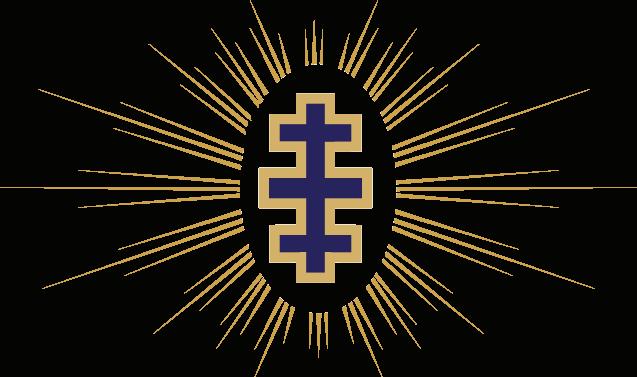
The 69th Triennial Conclave of the Grand Encampment of Knights Templar is coming soon. The Triennial Conclave Committee is working hard to make this a memorable and enjoyable event.
The 69th Triennial Conclave will begin with the drill competition on Saturday, August 17, 2024, followed by a “Pass in Review.” The Sunday, August 18, Divine service begins at 8:00 a.m. The Grand Master’s reception is that evening. The business sessions will begin on Monday morning, August 19, with the public reception of distinguished guests and the Grand Commanders. The business session will continue on Tuesday, August 20, with the Grand Master’s banquet on Tuesday evening. Installation will occur on Wednesday morning, followed by the adjournment of the session.
The Little America Hotel in Salt Lake City is the headquarters for the Triennial Conclave. This four-star property offers 850 luxurious guestrooms, complimentary in-room Wi-Fi access, down pillows, and other luxury amenities. The 10-acre grounds are beautifully landscaped with fountains, flower gardens, and over three hundred trees. The experienced, friendly staff is dedicated to their tradition of hospitality and excellence. The hotel is conveniently located in the heart of downtown Salt Lake City and just ten minutes from the Salt Lake International Airport Nestled between the Wasatch and Oquirrh Mountain Ranges in the magnificent Salt Lake Valley, the Little America is within walking distance from shopping, restaurants, cultural and sporting events. Other nearby attractions include historic Temple Square, the world-famous Great Salt Lake and national parks, forests, and monuments.
If you are planning to fly to Salt Lake City, you can ride the light rail system TRAX Green Line from the airport to the 600 South station. The TRAX station is located on the ground level outside of the airport terminal on the east side (exit door 1A and go east). The cost is $2.50 one way.
If your state is wishing to host a “State Dinner” at the hotel on Monday evening, please contact the hotel directly to make your reservations (Contact information below)
Everything you need to register for the 69th Triennial Conclave is on our website at: www.getktusa.com. In addition, you will find information about the drill competition, buying space in the official souvenir program book, vendor display reservations, candidate information, local attractions and much more. The cutoff for registration is June 1, 2024 or a late fee will be imposed.
Hotel reservations may be made online from our website at: www.getktusa.com. Rooms rates from $189 per night.
Hotel reservations can also be made directly with the Little America Hotel by phone at 801 -596-5700. The address is 500 South Main Street, Salt Lake City, UT 84101. Please mention the group GRAND ENCAMPMENT KNIGHTS TEMPLAR to receive the group rate. The cutoff date is July 15, 2024.
Grand Encampment of Knights Templar of the United States of America

David J. Kussman Grand Master
David Studley
Grand Captain General & Publisher
Please report all changes in membership to the Grand
Recorder:
Lawrence E. Tucker
Grand Recorder
Grand Encampment Office
3 Sugar Creek Center Blvd Ste 410 Sugar Land, TX 77478
Phone: (713) 349-8700
Fax: (713) 349-8710
E-mail: larry@gektusa.org
Magazine and correspondence to the editor should be sent in electronic form to the managing editor whose contact information is shown below. All photos or images should be property of the author, or used with permission or under license by the author, unless expressly noted otherwise.
Ben WilliamsManaging Editor
Laughing Lion
1100 W Littleton Blvd Ste 440 Littleton, CO 80120
Phone: (720) 328-5343
Fax: (720) 328-5297
E-mail: ben@knightstemplar.org
visit our website at: knightstemplar.org
®

The KNIGHT TEMPLAR (ISSN 2994-7189 (print); 2994-7170 (online)) is published quarterly in Spring, Summer, Fall, and Winter by Laughing Lion LLC, 1100 W Littleton Blvd, Ste 440, Littleton, CO 80120, on behalf of the Grand Encampment of Knights Templar of the United States
Most Christians are aware that Easter is the most holy holiday in the Christian calendar. Not Christmas. And certainly not New Year’s Day. Perhaps the sacredness of Easter has protected it from the commercial onslaught of the modern age and prevented its appropriation by base consumerism. There is always hope.
Yet, in the older calendars, Easter really was the new year. The dawn of not just a new day, nor even a new year, but new life in the culmination of the ages. Rex Regum et Dominus Dominorum.
As the sun crosses the ecliptic, the symbol of life everlasting is manifest across the northern hemisphere. All things spring forth in synchrony with the time. All things are one thing: God returning to Himself.
People often claim Easter was a pagan holiday appropriated by the Church in order to establish the Church’s dominion. But, in the wheel of time, sacredness spins like spokes converging at a common center. In some respects, then, Easter is not a pagan festival – and never was – it’s just at a moment in the cycle of seasons appropriate to symbolize themes of resurrection. In the coming of the ages, all things magnify the glory of God. Everything contains the inestimable truth. “To see the world in a grain of sand,” as William Blake once put it, “and heaven in a wildflower. To hold infinity in the palm of your hand, and eternity in an hour.”
Then, how can the year fail to epitomize not just Christ, but also His birth, death, resurrection, and ascension? How can the invisible things be apprehended if not by means of the visible? All things are united and made known in Christ. As Logos, Christos is Cosmos. As Cosmos, Christos is eternity unveiling.
Christos is Cosmos
And Cosmos is eternity unveiling
This is the place where the heart is wrought Hopeless, with passions railing And the spirit thick with Shadows countervailing
The appearance of all that really is
You fabricated this.
You made all that you think you see
This image is the wheel of your destiny Here, now, where teeth gnash amid all this wailing
Christ comes invisibly
To destroy the iniquity
Of your great illusion
And restore you again
At last, to true dominion
Rise great son of man! He who blesses it!
Look within these avenues of sin Here, pray that you see nothing! Into this void is birthed the greatest secret The resplendent vision Which can only be given To one who already possesses it.
Happy Easter!
©
Ben WilliamsChuck Clampitt is a member of Mt. Etna Lodge No. 333, Mt. Etna, IN.
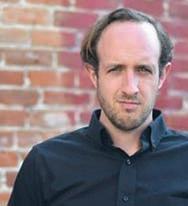
Patrick Dey is a Past Master and Secretary of Nevada Lodge No. 4, Colorado’s only ghost town lodge. He is a Past Master of Research Lodge of Colorado, Past High Priest of Keystone Chapter No. 8, Past Illustrious Master of Hiram Council No. 7, and Past Commander of Flatirons Commandery No. 7. He is a researcher of Masonic legendry and symbolism. Beyond Masonry he is an architectural designer in downtown Denver, with a Masters of Architecture from CU Denver and a Certificate of Classical Architecture from the Institute of Classical Architecture and Art. He lives in Denver with his wife, Sélah, and his son, Enoch.

Tom Loughlin, Jr. was appointed chairman of Utica Commandery No. 33’s bicentennial celebration by Utica Commandery’s Eminent Commander, Stuart Card, immediately following the completion of Utica Commandery’s 199th inspection by soon-to be NY’s Grand Commander R. Conrad Johnson. Loughlin’s involvement in organizations of Masonic affiliation began in 1964 when he joined Mohawk Valley Chapter of the Order of Demolay after a visit to the Masonic Brotherhood Center at the New York World’s Fair. He is a member of Oriental Faxton Lodge No. 224 F. & A.M., Oneida Chapter 57 R.A.M, and Utica Commandery No. 3 of the Grand Commandery of Knights Templar of the State of New York. He served as Commander of Utica Commandery from 1991to 1998..
James A. Marples is a life member of Mulvane Masonic Lodge No. 201 A.F. & A.M. in Mulvane, Kansas. He is a life member of Wichita York Rite Bodies (Wichita Chapter No. 33 R.A.M.; Wichita Council No. 12; and Mt. Olivet Commandery No. 12). He belongs to three Scottish Rite Valleys: Lincoln, NE; Waco, TX, and Guthrie, OK. He is also a life member of the Royal Order of Scotland and the Robert-the-Bruce Association. Jim is a member of the Masonic Order of the Sword of Bunker Hill; Kentucky Chapter No. 134, National Sojourners and Heroes of ‘76; North Texas York Rite College No. 118, Sherman, TX; and Nebraska College, SRICF. He is a dual member of Alabama College, SRICF, and Pearl-of-the-Orient College, SRICF, in the Philippines. He is a Regular Member of The Allied Masonic Degrees; Grand College of Rites; and St. David Conclave of The Red Cross of Constantine.

Chris Ruli is a historian and author of early American Freemasonry with a focus on the history of Freemasonry in Washington, D.C. He is a member of Columbia Commandery No. 2 and Potomac Commandery No. 3 in the District of Columbia. This article is based on research from Ruli’s book, The White House & The Freemasons, available from Macoy Publishing.
Ben Williams is a Registered Patent Attorney based out of Denver, Colorado. He’s a Past Department Commander for the Northwest Department and chairs the Grand Encampment’s Education Committee. He’s married to his patient and caring wife, Tiffany, a history teacher. They have a daughter, Adelyn, and a beagle, Warwick.




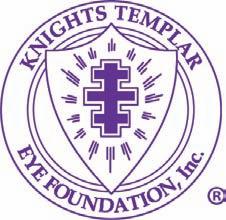
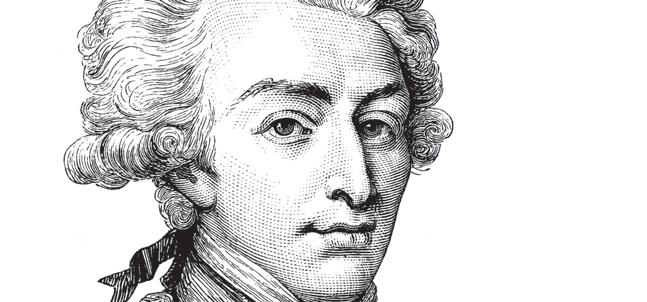
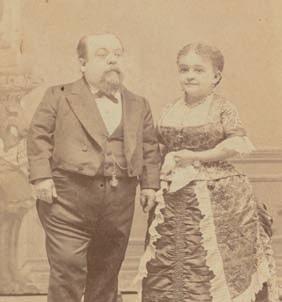


UTICA, NEW YORK – Founded on February 8, 1823, at the home of Richard Sanger in Whitestown (now New Hartford), Utica Commandery No. 3 turned 200 last year.
Utica’s charter was personally signed by Governor Dewitt Clinton, then-Grand Commander and Grand Master of New York and Grand Master of the Grand Encampment.
Clinton is notable in the history of Templary. He had served three times as Mayor of New York City (1803-1807, 1808-1810, 1811-1815), as a United States Senator from New York (1802-1803), and, two years after founding the Grand Commandery, as the sixth governor of New York (1825 until his death in 1828). He was Grand Master of the Grand Encampment from its founding in 1816.
Utica Commandery remains influential in its community since its founding, with many members playing key roles in community development. Thomas Redfield Proctor, a founding member and successful hotelier in
the region, donated land to Utica for its extensive public parks. He also donated lands for church and civic groups. In 1921, citizens of Utica erected an eight-foot bronze statue in his honor. Among many engagements, Proctor was appointed one of the Commissioners for the 1900 World Fair and was appointed by President Taft to the board of the Naval Academy at Annapolis.
“Proctor is just one of the many members of the Knights Templar who have shaped Utica and its surrounding communities for the better,” Rebecca Mclain, Executive Director of the Oneida County History Center, said at a gathering at Masonic Hall in Utica on February 8, 2023. “The order has deep roots in our community and has a lasting impact on the county.” Richard Sanger’s ancestor, Jedediah Sanger, was a founding member of the community establishing settlement in the region.
On February 8, 2023, the Commandery convened at Masonic Hall on Genesee Street,
Utica, to commemorate their bicentennial. The Director of the New Hartford Historical Society, Mary Hayes Gordon, brought Sanger’s gavel to show the assembly: its head is wrought of stone quarried from King Solomon’s quarry in Israel.
“The New Hartford Historical Society extends our best congratulations to the Utica Commandery No. 3 Knights Templar State of New York on your two-hundredth anniversary,” she said.
“This history that is in this room alone is something that needs to be celebrated but also recognized,” County Executive Anthony Picente, Jr., said. “I’m very proud to be here today and be able to celebrate with the Knights.”
“It’s a proud day for this community, proud day for the city of Utica, a proud day for the county of Oneida and the state of New York recognizing two hundred years of service,” he said.
Candlelit Sir Knights (L to R): Past Grand Commander Dennis Davis; Deputy Grand Commander John W. Scott; Commander Frank Fancher, Rome Commandery No. 45; Commander Stuart Card, Utica Commandery No. 3; Captain General Earl Wilkinson of Otsego and Norwich Commanderies Nos. 46 and 76; Raymond Roche, Commander General of the Masonic War Veterans and 2022 Knight Templar Cross of Honor honoree; Past Commander Louis Denato, Sr., Utica Commandery No. 3.
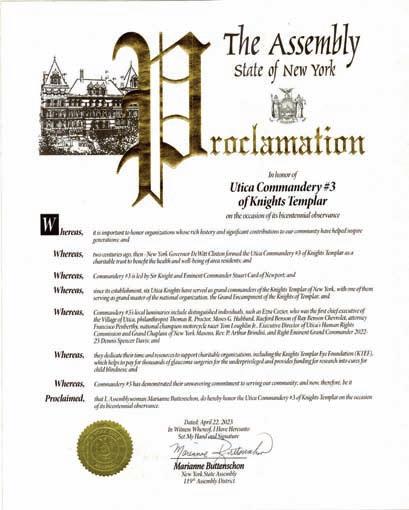

Above, L to R, clockwise: Proclamations recognizing Utica Commandery’s contributions to the State of New York; Mayor Palmieri’s proclamation declaring Utica a “Templar Citadel City”; and Utica Commandery’s Charter, signed by Dewitt Clinton.
The bicentennial celebrations continued through the year. On Friday, October 13, 2023, the 716th anniversary of the arrest of the medieval Templars, in recognition of the role of Templary in the community and beyond, Mayor Robert Palmieri proclaimed the city of Utica a “Templar Citadel City.” The same day, Joseph Griffo, senator for the 53rd Senate District of the New York State Senate, proclaimed that the New York assembly pause in its deliberations to commemorate the two hundredth anniversary of Utica Commandery No. 3 with a moment of silence.
The bicentennial year concluded on December 28 with a Christmas Observance. KT


JERUSALEM – Two rare weights discovered as part of the Temple Mount Sifting Project suggest a Byzantine church might have existed on the Temple Mount before the early Islamic period (c. 634-1099 AD) and the construction of the Al Aqsa Mosque.
The discovery was made as part of the Temple Mount Sifting Project and published by the Israel Numismatic Society last year.
The two weights discovered are small denomination Keratia (κερατίον) weighing approximately 0.02 ounces each. One is made of glass, the other of brass. During the Byzantine period (c. 324-634 AD), the law required each city in the kingdom to maintain an official set of weights in the most holy church. These were used to verify the weights of gold coins in approving transactions. According to the archeologists who made the discovery, these two weights must have belonged to an official set of imperial weights and measures. The team dates them to between 550 and 650 AD.
Keeping weights and measures in churches signifies the importance of commerce under the holy auspice, where weights and measures were speechified. It also demonstrates keeping true weights in a site signifying probity and authority.
The glass weight is less than an inch in diameter and impressed with a stamp. The brass weight is square-shaped, about half an inch wide, and is inlayed with silver with the letters kappa delta (ΚΔ) prominent. This probably stands for Keratia and the number four (the Greeks used letters to signify number – Arabic
numerals were not adopted by the West until around the twelfth century).
The Temple Mount Sifting Project began in 1999 under the aegis of Bar-Ilan University, funded by private donations. The Northern Branch of the Islamic Movement had removed more than 9,000 tons of soil from the Temple Mount during renovations. The material –containing rare archeological artifacts – was dumped in Kidron Valley. Recognizing the potential for important discoveries buried in the material, Archeologists Dr. Gabriel Barkay and Zachi Dvira retrieved the material and began sifting it in 2004.
Other Byzantine finds have included fragments of Byzantine floor tiles, chancel screens, and Byzantine-era mosaics, consistent with early churches.
“We have all this Byzantine material which shows that something was going on, but up until a decade ago, the consensus was that during the Byzantine period, the Temple Mount was desolate,” Haim Shaham, a co-author of the study, told the Times of Israel. “But in actuality,” he said, “a lot was going on during the Byzantine era [on the Mount], and from what we have found, it can be comfortably associated with a church.”
The discoveries are not conclusive evidence there was a church on the Temple Mount. But they offer a straight-forward explanation, Shaham said. “We have to weigh the simplest explanation as to why the weights are there,” Shaham said, “and simple is always the best.”
Notably, similar weights have been found
at another Byzantine church site in the Golan Heights, at Sussita. “The idea of official weights inside a Byzantine church has already been established in the Levant,” Shaham said. These weights are consistent with that determination.
Jerusalem was captured from the Eastern Roman Empire, in Byzantium Christendom, in 638 AD. The Muslim conquerors recorded that the Mount was desolate and used as a dumping site.
However, prior to their conquest, the Sassanid Persian Empire had decimated Jerusalem in 614-630 AD. The “dump” recorded could have represented the remnants of a church on the Temple Mount destroyed then, or perhaps the reports transmitted through the centuries exemplify a case of history recorded by the victor, Shaham said.
Additional finds by the Temple Mount Sifting Project include approximately 350 horseshoe nails, all from debris that was removed from a large pit dug to accommodate a staircase built into the northern façade of Solomon’s Stables. Consistent with stories of the Knights Templar taking up residence there, these nails date to the Crusader period and are direct evidence of equestrian activities in the vicinity of Solomon’s Stables. KT



 Photo courtesy of the Temple Mount Sifting Project
Photo courtesy of the Temple Mount Sifting Project
Photo courtesy of the Temple Mount Sifting Project
Photo courtesy of the Temple Mount Sifting Project
The 69th Triennial of the Grand Encampment will be held at:

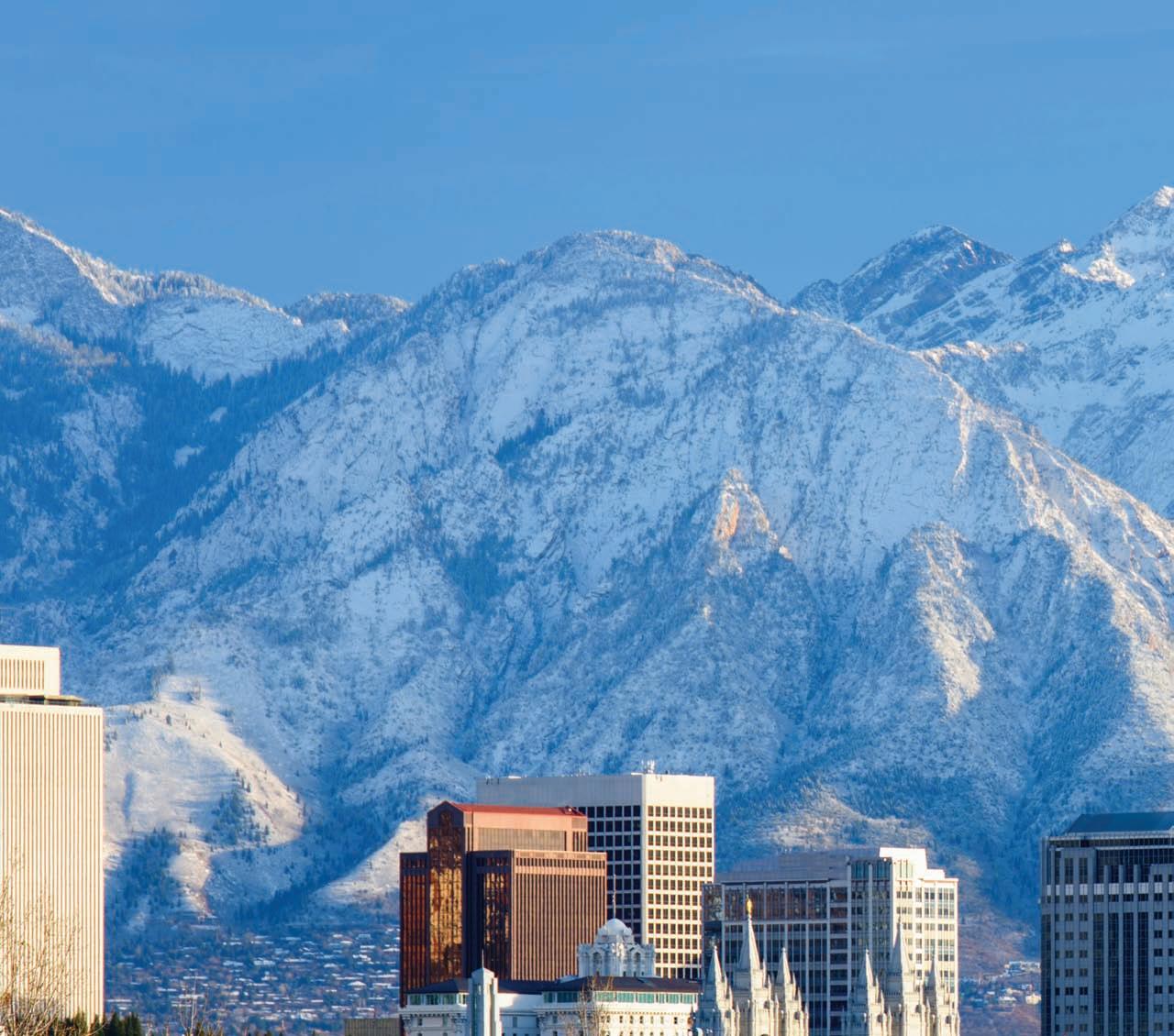
In August, 2024, Salt Lake City will host the 69th Triennial Conclave of the Grand Encampment of Knights Templar of the U.S.A. The business and cultural center of the state, with a metro-area population of around 1.3 million, Salt Lake City is the capital and largest city in Utah.
Located at about 4,000 feet above sea level, in the foothills of the Wasatch Mountains in the northeast corner of Utah, Salt Lake City is known as the Crossroads of the West: the first Transcontinental Railroad was completed nearby in 1869. The city boomed, fueled by its profitable mining industry.
Many settlers dabbled in mining. One notable person was a devoted Mason, a member of both the Scottish Rite and York Rite: Governor George Henry Dern, Governor

of the State of Utah from 1925-1933.
Salt Lake City owes its existence to the little town of Nauvoo, Illinois. Were it not for the exodus of the Latterday Saints from Nauvoo in 1846, escaping persecution for their new religion, the hand-cart pioneers would not have journeyed westward across the Great Plains and Rocky Mountains to the Wasatch Valley to settle in modern day Utah, in July, 1847. Brigham Young (who was a Mason), president of the Latter-day Saints, led the 148-member party there, choosing the site for the city from a vision. “This is the right place,” history records him saying. “Drive on.”
The land was peopled by the Northwestern Shoshone tribe, and under a claim by Mexico, but the area was unsettled when Young and his followers arrived.
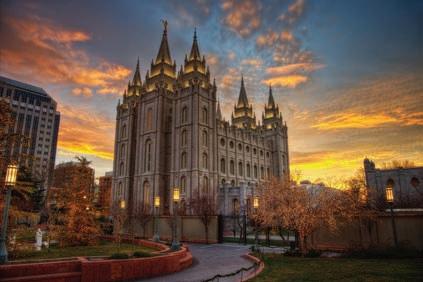
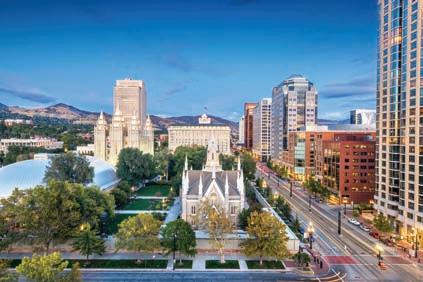


(In fact, the Shoshone aided the settlers, teaching them the edible roots available in scarce times.) Mexico ceded the land to the United States in 1848 as part of the Treaty of Guadalupe Hidalgo.
After four days, Bro. Brigham Young selected the site for the temple, which would be the center of the community, and laid out the streets in a grid pattern, running north-south and east-west. The southeast corner of Temple Square (where the Temple is located) marks the meridian bisecting the city from which all addresses are enumerated. The city has famously wide streets (132 feet). Common lore is that Young decreed that the main streets in the city center should be wide enough to enable an oxcart to turn around. However, Joseph Smith had laid out a design for a “Plat of the City of Zion” that

incorporated 132 feet wide streets. It was widely used as the archetype for Mormon settlements.
For those Sir Knights and ladies looking for sightseeing adventures, the city is home to a world-class Hogle Zoo, the Choir at Temple Square, and the outside of the Temple has numerous emblems familiar to all Masons (such as The All-Seeing Eye of Providence, five-pointed stars, and other symbols). The Tabernacle is open for public tours, and such personalities as President John F. Kennedy have given speeches inside the Tabernacle.
Bro. Brigham Young’s grave is located in the small “Brigham Young Family Cemetery” just a couple of blocks east of the Temple at 140 E. 1st Avenue. Bro. Heber Kimball’s gravesite is located at his old farm site just a few blocks north of the Temple.
Salt Lake City, and nearby towns such as Provo, have some noteworthy colleges and universities, including Brigham Young University, and the University of Utah. Various ski resorts (such as Snowbird and Alta) cater to various forms of recreation all year-round.
Utah Lake attracts people who love the outdoors. The Intermountain Unit of the Shriners Hospital for Crippled Children is located at Salt Lake City. Notable to all Masons, it is
worth a visit. (Over twenty years ago, my late mother, Gloria Riedl Marples and I stopped there and had a bite to eat at their cafeteria. It was an excellent experience.)
Many of the hotels and motels in and around Salt Lake City are superb, eager to serve patrons’ needs – both for your conference needs and sleeping accommodations. Salt Lake City is served by several television stations and the once legendary radio-station which received its
license to operate in April of 1922, KSL Radio 1160 kHz on the AM dial or 102.7 MHz on the FM dial. That station will celebrate its 102nd year of broadcasting in 2024.
The sights and sounds of Salt Lake will be worthy of all Sir Knights and their ladies attending the 2024 Triennial Sessions. KT
he ten-acre site was designated as a National Historical Landmark District in 1964. The square is home to the Salt Lake Temple, Salt Lake Tabernacle, Salt Lake Assembly Hall, the Seagull Monument, and two visitors’ centers.
Housed in the 163,000 square-foot Rio Tinto Center, designed by the renowned Ennead Architects, the Natural History Museum of Utah is the state’s official museum of natural history. Open 10 a.m. to 5 p.m. daily. Open till 9 p.m. on Wednesdays. Exhibits include world class paleontological displays, gems and minerals, and history of human settlement in the intermountain west. Tickets are $22.95 for adults ($20.95 for seniors over 65 years old).
This 15-mile scenic drive through the UintaWasatch-Cache National Forest takes about an hour round trip from Salt Lake City.
Take I-215 to the 6200 South “Canyons” exit and head east on U-152. Old gold and silver mines dot the skyline. Solitude and Brighton ski resorts are located along the road, both are open year round for visitors – whether skiing in winter or touring in summer. Several easy trails are accessible from Brighton, including Twin Lakes, Lake Mary, Lake Martha, and Dog Lake. Dogs are not allowed.
Designed by Richard K. A. Kletting, the Utah State Capitol was commenced on a 20-acre parcel at Arsenal Hill donated by Salt Lake City in 1912. The budget was $2.5 million. The impressive edifice is wrought of white Sanpete oolitic limestone, quarried from near Ephraim, about 120 miles south of Salt Lake City. The building is host to impressive niche sculptures, hand painted lunettes and pendentives. The cyclorama in the rotunda depicts scenes representative of settlement of the city. Encircling the building, the memorial pathway (0.7 miles) features various memorials, monuments, and statues along the way.
Its dome, extruded as a three-dimensional ellipse, was devised for acoustical resonance in imitation of the roof of the mouth. It’s still revered as an architectural marvel, not least because the timber arches supporting the dome were designed to be constructed with minimal nails (which were in short supply in the nineteenth century west) but because sound is propagated almost equally throughout the structure. The Tabernacle is widely regarded as one of the most acoustically perfect buildings in the world. Oscar Wilde may have called the building the most dreadful building he’d ever seen, or a lost turtle, but iconic architect Frank Lloyd Wright dubbed it “one of the architectural masterpieces of the country and perhaps the world.” The Tabernacle is adorned with symbolism recognizable to Masons (in similar import) and hosts one of the world’s most revered pipe organs.
Interactive exhibits take you from earth to orbit and beyond. Or watch Deep Sky on the Northrop Grumman IMAX, and delve into the deep space imagery captured by the James Webb Space Telescope like never before. The film follows the construction of the telescope, its deployment to orbit, and the first full-color images sent back to Earth. Or catch the animated origins of Earth in the Hansen Dome Theater. Other shows include Accidental Astronauts, Extreme Weather 3D, Secret Lives of Stars, and Space Explorers: The ISS Experience. Tickets are $10.78. Shows are approximately 40 mins.
The Cathedral of the Madeleine was built from 1900 to 1909 in the Romanesque (exterior) and Gothic (interior) styles. Mass is held Saturdays at 8 a.m. and 5 p.m. (English) and 7 p.m. (Spanish); Sundays 8:30 a.m., 11 a.m., and 6 p.m. (3 p.m., Spanish); and Monday through Friday at 8 a.m. and 5:15 p.m.

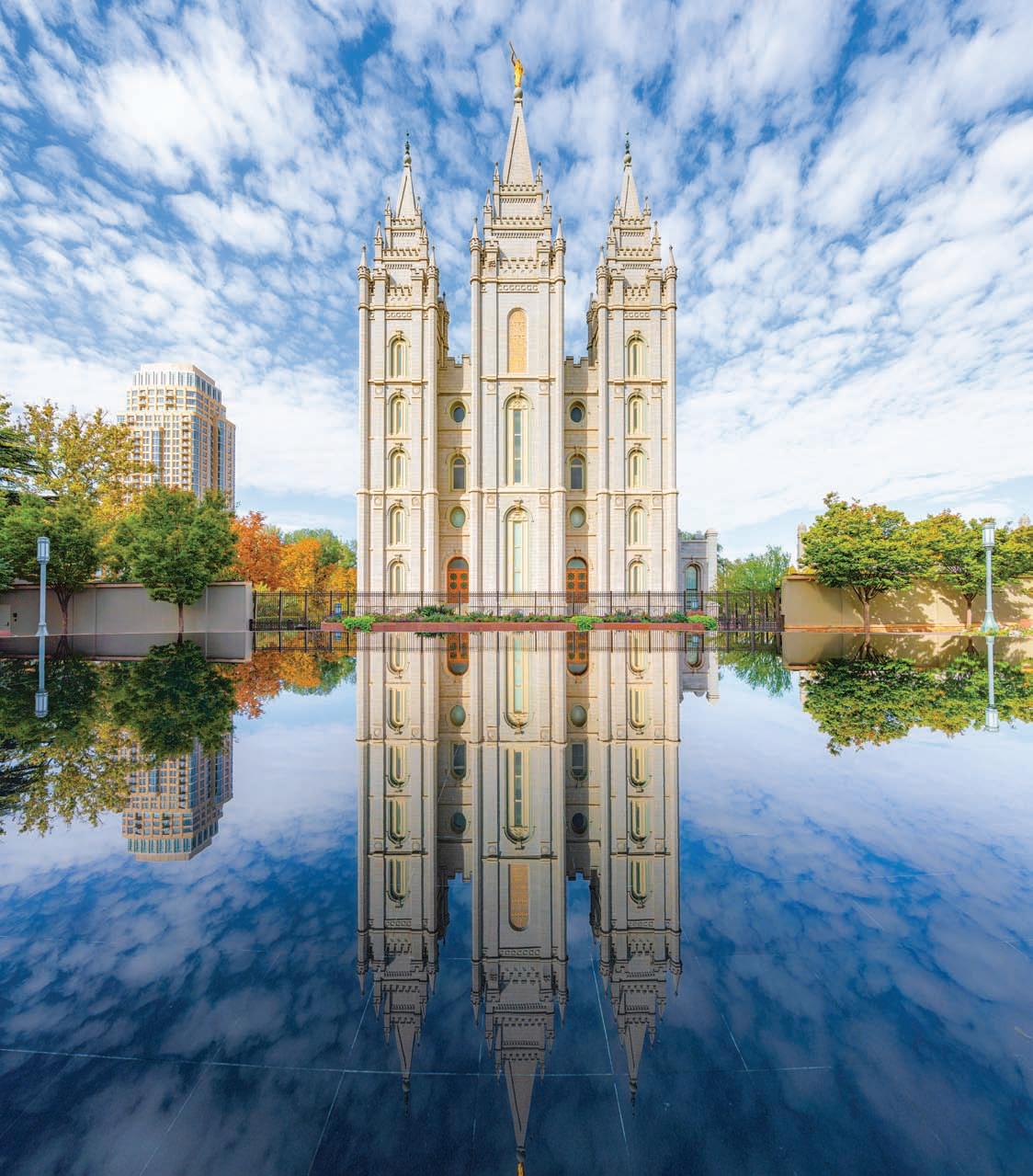
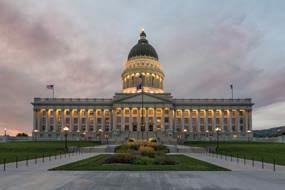





It’s rare to see articles written about geometry in Masonic magazines. Outside the lecture on the middle chamber in the second degree, it’s rare to hear geometry discussed in Lodge, either. Yet, under the surface, our ritual is steeped in geometrical symbolism.
It’s not an easy subject to write about. Not everyone is good at math. Not everyone cares about geometry. In the modern world, geometry seems arcane, its foremost mathematicians quaint – even irrelevant. And demonstrating angles, lines, and circles, along with rules, postulates, and theorems, is a surefire way to get most anyone to skip to the next article.
On top of all that, most people took geometry in school and passed, so what else is there to say really? Well, maybe that’s the wrong question. With geometry, maybe it’s more about what is shown, not spoken. So, we are going to skip all the talk of Euclid and Pythagoras and jump right to showing you geometrically how the Maltese and Templar crosses are inseparably interwoven with the measurement of time.
Some people would call this sacred geometry. Others, nature’s geometry. The reasons for that

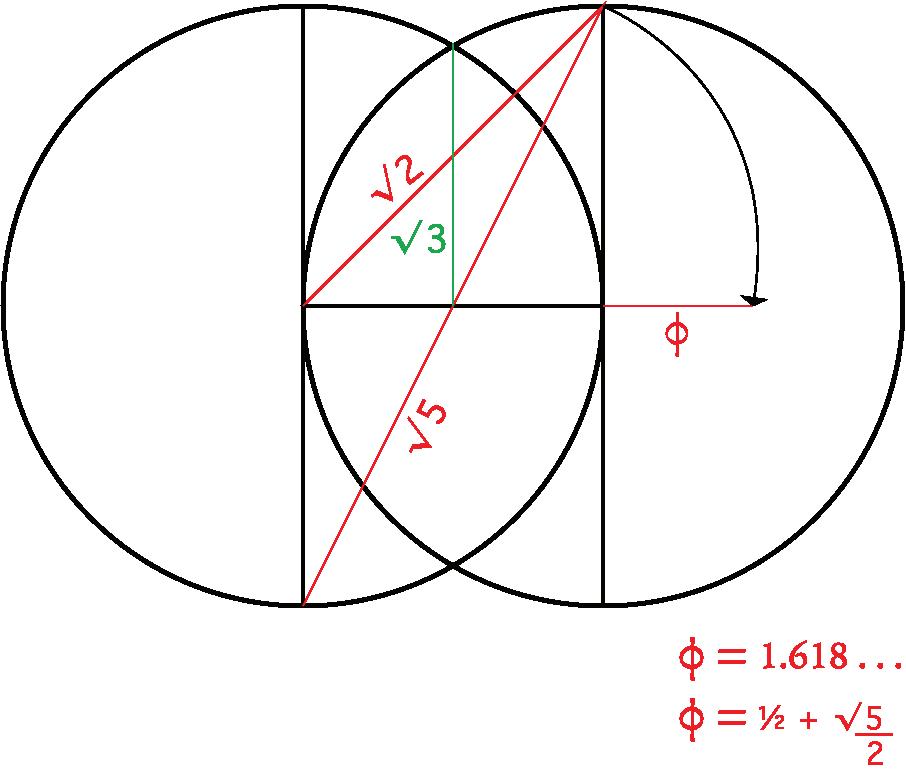
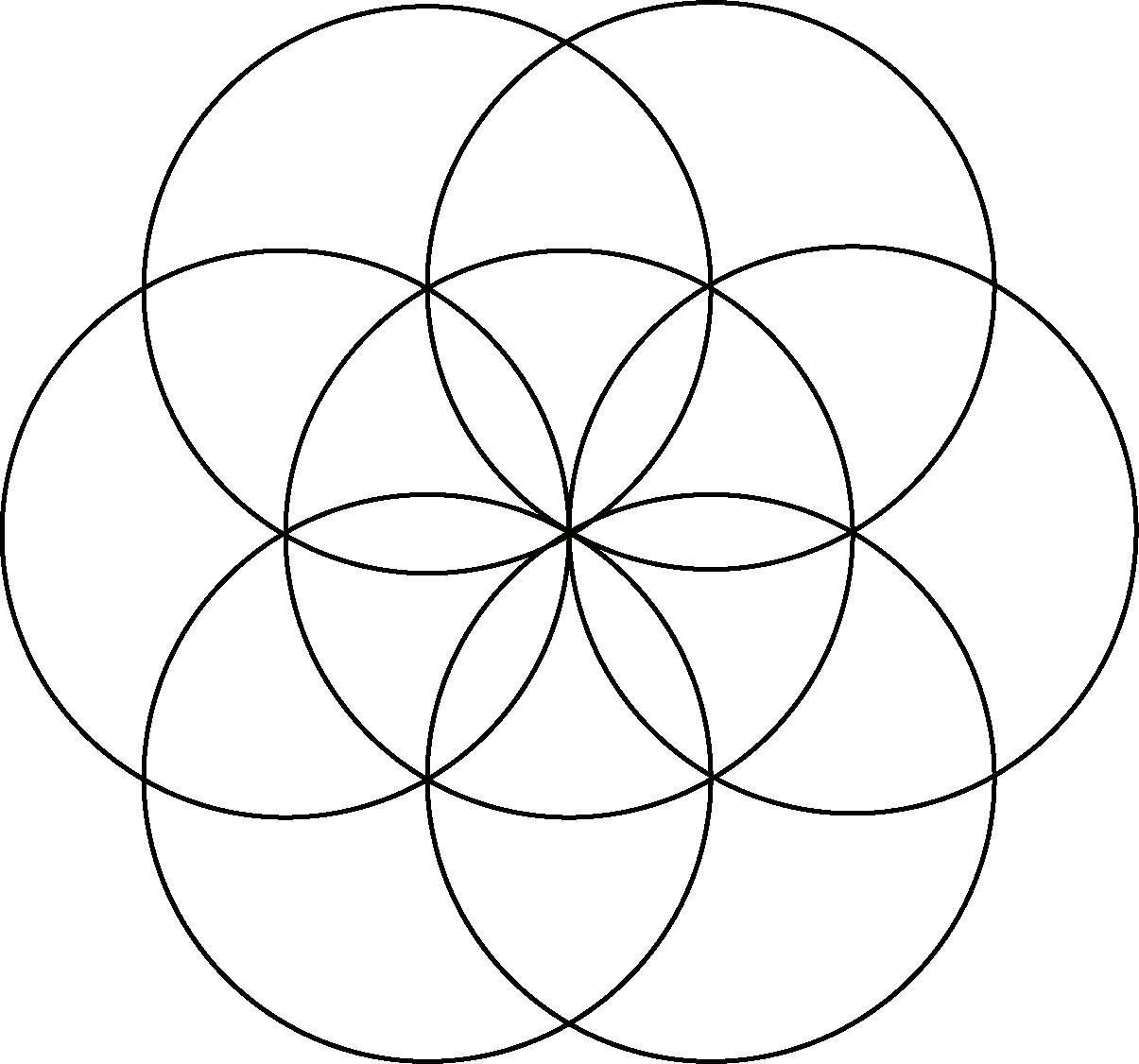
are many, but you can just call it plain geometry, because at its core, that’s all it is.
The first thing we need, as Masonic geometricians, is of course a compass. Our craft revolves around this (no pun intended) and its familiarity to us should be second nature. Why would the compass be so important to us in geometry? Well, because all things in this realm of geometry, even straight lines, begin with circles. Because of their lack of a beginning and an end, they are the ultimate symbol of infinity or eternity. They represent something without end, a vast never-ending expanse. That said, let’s draw.
The first circle we create can be of any size. What we are doing is universal, and based on proportion not magnitude, so your circle can be of any radius you like. You can use any unit of measurement you want. Notice that after making this circle with your compass, you actually see the circumpunct, a big-bang on the paper, as the swivel-end of the compass leaves a hole in the center of the circle where it spun on the paper.
This relationship between the circle and the circumpunct, the symbol of our craft, and creation itself, is a clue we are on the right track.
Circle made, we then make our second circle. We must make it the same diameter as the first, symmetry and order, so our compass settings won’t change. Symbolically speaking, circles, arches, and any rounded shape, are feminine. Conversely, in geometry, straight lines and angles that come to points are considered masculine. (This geometrical symbolism can be extended to nature. For example, in the human phenotype, women are considered generally more curvy while men are considered generally more square-shaped and boxy.)
When we overlay the second circle on the first so that their circumferences touch each other’s center, we have created a very famous shape called the vesica piscis (figure 1). This shape has been studied, written about, and meditated on, by philosophers, geometrists, mystics, Christians, Muslims, Jews, Hindus, Buddhists, designers, and architects (among others) for thousands of years. So, we’re not going to go much into it here, but just know within these two circles is the information behind the geometry of creation, as it is apprehended symbolically by mystics and mathematicians, both modern and ancient.
To illustrate only a little bit, in the vesica piscis you can find the square roots of 2, 3, 5, and phi, the golden ratio (figure 2). All those numbers are irrational and all of them are found repeatedly in creation. Because of this, they have been used by man to imitate God’s perfection. Solomon used these ratios in the construction of the temple. So did the designers of the sphinx and the great pyramids of Giza.
The ‘almond’ center of the shape itself even resembles the shape from which all life comes, be it an apple from its seed, or a baby from its mother (figure 1). For the curious student, there is some very profound information here. But the focus of this article is time and the Templar
Figure 1.crosses. So, onwards!
We know that, symbolically, seven is the number of perfection but we have only made two circles. Let’s make five more. Using the intersections created by the overlapping circles and without changing the diameter of our compass, we place our point and draw five more circles, creating a flower like design known as the seed of life (figure 3). The seed of life can be found in holy places all over the world. It’s the symbol of the very measurement and interpretation of time. It is also the symbol at the heart of the crosses we are concerned with here.
Since we haven’t drawn any straight lines yet, this seed is considered a feminine shape. Like an apple which root sprouts from its seed – our feminine geometrical shape created – we can now begin to draw out the masculine lines hidden inside.
The first obvious masculine shape is the hexagon. It is the six-sided shape made from connecting the tips of the flower petals together (figure 4). If we draw straight lines inside the hexagon from one end to the other, through the center, we see that the hexagon is made up of six equilateral triangles (figure 5). Equilateral triangles (or “deltas”) have been symbols of deity for millennia and here in geometry we see its importance as the most basic building block for the hexagon. It is, in fact, the most basic building block used by all the other platonic solids as well, thus cementing its role as the creative force in geometry.
This isn’t just any hexagon, mind you. The angles of this hexagon are directly related to how we measure time. This is where our first hint of the relationship between the knight’s crosses and time’s measurement is inferable. The outside angle of this hexagon is 240 degrees. That makes the interior angle 120 degrees (figure 6). You can see how the angles of this hexagon hint to us, in hours, the length of the day and night. Yes, there are only six angles in a hexagon. But when multiply each of those angles by six to get 1440 (6 x 120 = 720 and 6 x 240 = 1440). What does that have to do with time? In twelve hours, there are 720 minutes. In twenty-four hours, there are 1,440 minutes. The hexagon is like a vessel for the counting of time.
The hexagon isn’t the only masculine shape creatable from the seed of life. If the seed of life is circumscribed inside its own circle, and lines are again drawn through the intersections that pass through the center (the same way as before when making the equilateral triangles), the circle is divided into twelve equal parts, the exact number of parts needed to make a geometrically accurate clockface with thirty degrees between each section (figure 7). Starting with a circle, we created the vesica piscis. From there, we created the seed of life. Then, one more circle to enclose the seed with added lines bisecting the intersections of the circles therein contained and we have arrived at the basic design for a clockface.
Our ancient forbears were a mystical bunch. They needed their symbolism, not only to hide secrets, but to

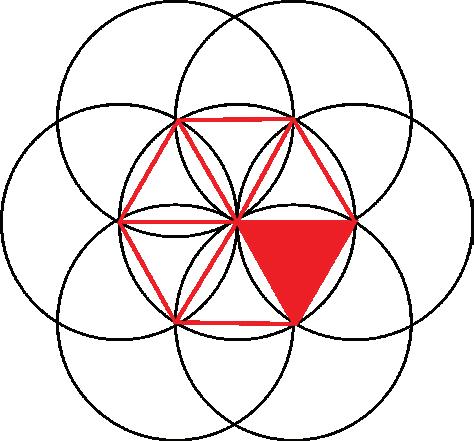

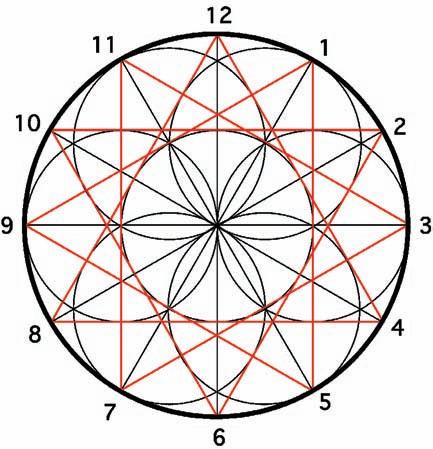 Figure 4.
Figure 5.
Figure 6.
Figure 7.
Figure 4.
Figure 5.
Figure 6.
Figure 7.
evoke deity and inspire holiness. If we draw a straight line from the 12 o’clock position to the 4 o’clock position, from there to the 8 o’clock position, and then back to 12 o’clock where we started, we have created an equilateral triangle. This equilateral triangle cuts the circle into a quarter and, as such, its angles only point to three numbers on the clock. If we rotate this triangle three times around the circle (thirty degrees each rotation), so that each number on the clock is pointed to by an angle of a triangle, a twelve-pointed star appears: the design template needed for the Maltese cross (figure 8). From here, the Maltese cross remains when its lines are accented and the rest are erased (figure 9).
The Maltese cross is symbolically associable with the measurement of time because the underlying geometric template from whence the Maltese cross is devised is the same underlying geometry as a clockface, or in ancient times, a sundial. This clockface, however cool, is about as exact as a sundial and not that sophisticated. Could ancient man have known the length of a second to tell time more accurately?
That’s where the Templar cross comes in.
As we saw above, the Maltese cross is based on a twelve-pointed star. Resultantly, the two points on any arm of the cross are 60 degrees apart. To delimit the passage of a second, we need to demark 30 degrees arcs, and we need that 30 degree arc down-pointing to mark the interval of a pendulum swung between its extremities.
Ancient man, including the ancient Egyptians, hung a pendulum and swung it in a 30
degree arc to determine the length of a second. The time it took for the pendulum to swing the 30 degrees was one second.
The Maltese cross represents no 30 degree markings. The only angle we have to work with at the bottom of the circle is between the 5 o’clock and the 7 o’clock positions, an arc of 60 degrees. We can fix that geometrically by bisecting the existing angles in the Maltese Cross template, thereby making a twentyfour-pointed star, the geometry needed for the Templar cross.
Inside the pattern created in the template used in constructing the Maltese cross there is a series of rotating squares, three of them as a matter of fact (figure 10). Lines drawn from the corners of the squares, bisecting the square through its center, and extended to the perimeter of the design, will subdivide the circle into twenty-four equal parts. The Templars were esotericists, they informed their symbols with mysticism. Three more rotating equilateral triangles are creatable using the endpoints of the lines drawn. These equal divisions delimit the 30 degree arc against which the length of a pendulum may be swung, and the template for creating the Templar cross has emerged. As with the Maltese Cross, it is now just a matter of shading and darkening lines already created until the desired design is isolated (figure 11).
The Templars and other chivalric orders were believed to be keepers of occult knowledge. The Maltese and the Templar crosses, the most prominent of the symbols employed by the Templars, each contain the geometry needed to create the tools by which time is measured. KT
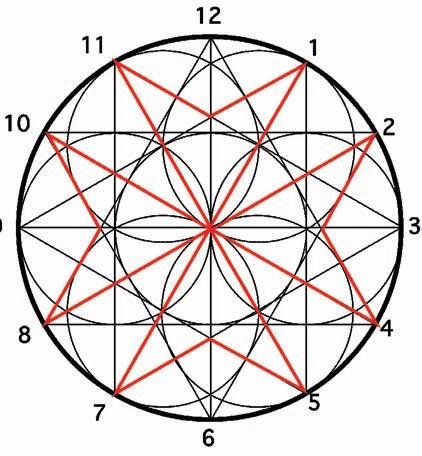


 Figure 8.
Figure 9.
Figure 8.
Figure 9.
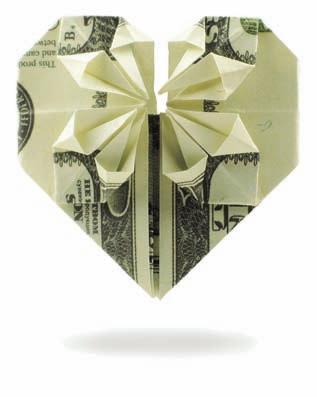

 by B. Chris Ruli
by B. Chris Ruli



On August 16, 1824, Marie-Joseph Paul Yves Roch Gilbert du Motier, known more commonly as the Marquis de Lafayette, arrived in the United States to begin his final and most public goodwill tour. With the country just two years away from its 50th anniversary of independence, President James Monroe and Congress extended Lafayette, the last living major general of the American Revolution, an invitation to return to the United States as the “Nation’s Guest.” Lafayette agreed and prepared to depart later that summer. Meanwhile, news of his impending return energized the country. State legislatures drafted invitations for Lafayette to visit their state capitals; city and town councils organized planning meetings and took up collections to fund public parades, lunches, and banquets; and Masonic bodies, especially the Knights Templar, made their own preparations to welcome a fellow brother and extend their own fraternal courtesies.1
Lafayette returned home after the American Revolution filled with momentum and potential for his own country’s political future. He soon found himself unwelcome by his peers in the
upper class and monarchy, who disapproved of his intentions to bring about political reform, and the revolutionary factions who thought a constitutional monarchy did not go far enough. With diminishing support and political capital from both sides, Lafayette collected his family and fled to the United States through Belgium.
Unfortunately, Austrian forces captured and imprisoned the family while enroute to the American consulate and several attempts to secure his release failed to materialize. Lafayette remained in jail for five years until September 1797 when Napoleon Bonaparte finally secured his release. Lafayette spent the ensuing years lobbying for his seized estate and former fortune with assurances that he would remain out of the public spotlight. That is, until the winter of 1823/24 when he received his invitation to return to the United States.2
Lafayette hesitated to return to the United States on account of his ongoing financial problems. With few funds left to secure passage across the Atlantic and cover expenses while traveling across the country, Lafayette had to lean on American expats abroad and others for their assistance. Funds were collected to pay for his trip and news of his financial condition spurred American leaders to cover his expenses thus ensuring Lafayette would truly be welcomed as the “Nation’s Guest.”3
greeted by a throng of citizens eagerly awaiting his arrival. If he remained in town for an evening, all attempts were made to secure the finest rooms in town and host the most elegant functions and banquets where toasts were performed in his honor. Coordination between Masonic bodies and committees of arrangement varied greatly. Some Masonic bodies participated in the public welcome parades or festivities, while others preferred to pull the honored guest away to attend a Lodge meeting late in the evening, that is, if his schedule permitted. Some public activities occurred in Masonic halls, which often provided enough space to hold large gatherings.
Lafayette’s first proper Masonic activity occurred on Saturday, September 11, 1824, when he consented to be initiated into the
conferred upon them the highest honors, of which they presented them the richly wrought badges.6
According to Columbia Commandery’s official history, Lafayette’s son George did not receive the orders on that occasion but did so together with Levasseur the following year at an undetermined date. This would account for Levasseur’s erroneous recollection in his diary. Both George and Levasseur had been initiated into Freemasonry prior to their arrival to the United States and joined Lafayette on almost all his trips to Masonic activities. The Grand Lodge of New York’s Livingston Library and Museum maintains a black Templar apron purportedly worn by Lafayette at his initiation.7
“If he remained in town for an evening, all attempts were made to secure the finest rooms in town and host the most elegant functions and banquets where toasts were performed in his honor.”
Lafayette and his party, which consisted of his son George Washington Lafayette, his valet, and secretary, Andre Levasseur, arrived in New York in August 1824. Their first weeks in America consisted of formal receptions in New York City and Boston with smaller receptions and activities along the way. Boston’s St. John Lodge had written to Lafayette upon his arrival but he had to decline their invitation to visit their Lodge due to his busy schedule. He would eventually honor their invitation the ensuing year when he returned to Boston.4
Wherever he visited, Lafayette and company were inevitably greeted by a welcome committee or committee of arrangements, which assembled weeks or months prior to his arrival to arrange his visit. Lafayette often arrived by carriage, almost always with some form of civilian or military escort, and was
2 Louis Gottschalk, Lafayette in America, Book 1 (Chicago: University of Chicago, 1975), 1-82.
3 George
Royal Arch and Knights Templar through New York City’s Jerusalem Chapter No. 8 and Morton Commandery No. 4, respectively. A Masonic delegation arrived at Lafayette’s residence that morning at around 9 o’clock and escorted him to St. John’s Hall where he first received the Royal Arch degrees. Jerusalem Chapter then closed and Morton Commandery No. 4 opened and performed a joint conferral along with Columbia Commandery No. 1.5
Lafayette’s Secretary, Levasseur, maintained a diary of the party’s activities throughout their entire trip. His account is a helpful primary source for major events and, on occasion, he included private receptions like Lafayette’s initiation into the Royal Arch and Knights Templar. Levasseur writes: The general and his son were present at a masonic celebration of the Knights Templars, who admitted them to their lodge, and
Lafayette’s second reception with Knights Templar occurred on March 15 in Charleston, South Carolina, during his Spring tour through the southern and western border states. Unable to participate in any formal Masonic receptions in Charleston on account of his schedule, Lafayette welcomed a delegation of Knights at his residence for a brief visit. The delegation consisted of Knights from Charleston’s South Carolina Encampment and Lafayette Encampment No. 3 from nearby Georgetown. Knights arrived around 3 o’clock at Lafayette’s quarters in St. Andrews Hall on Broad Street. After an introduction by Grand Commander Moses Holbrook, U.S. Navy Chaplain Cheever Felch delivered the following welcome:8
We appear before you, General, as a deputation from “South-Carolina Encampment of Knights Templars” to present their respects and congratulations on your arrival in Charleston. We had long indulged the hope of participating, in common with our Brethren of every degree, in the pleasure of uniting with you in a Masonic dinner; but we have learnt with regret that your engagements will not permit you to accept the invitation offered by the Grand Lodge. But we could not allow the present occasion to pass without some testimony, in accordance with the example of our Brethren and Companions in other cities, how much we respect your virtues,
Levasseur, 95.
6
7 Goodell, 12.
8
Morgan, The True Lafayette (Philadelphia: Lippincot, 1919), 422423. 4 History of Saint John’s Lodge of Boston in the Commonwealth of Massachusetts (Boston: Seaver-Howland Press, 1917), 86.
and how grateful we feel for those labors of love which you, together with our great father, your honored friend Washington, and his gallant compatriots, have rendered to this country.
It has ever been the custom of the fraternity to cherish feelings of regard for those worthy members of the Craft, who have distinguished themselves by the practice of our tenets and principles. We shall not, then, venerable Brother, be accused of flattery, when we say that we can trace, in your long and faithful career, a strict adherence to “Brotherlylove, Relief and Truth.” Your brotherly love prompted you, even in your youth, to come to the assistance and relief of our fathers, when struggling in the cause of the violated rights of man; and your valor assisted them to achieve those victories that resulted in the formation of our present happy constitution, founded upon the immutable principles of Truth.
As the grand characteristics of Templars, a holy order in which we feel proud to hail you a Companion, are “unsullied honor, unwearied zeal in a brother’s cause, and universal benevolence” – virtues which you possess in an eminent degree, and have so conspicuously displayed in a long life devoted to the welfare of your fellow men, permit us, as members of the same order, to add our feeble voice to the millions who greet you in your progress thro’ this happy country, a country so much indebted to you for the happiness it enjoys. Accept, then, General and Companion, the best tribute we can offer you, the reverence and sincere homage of grateful hearts.9
Lafayette responded:
Knights, I am extremely happy in receiving this testimony of your respect and affection. During my present visit to this country, the attentions of my Masonic Brethren have afforded me the greatest pleasure. I wish them every prosperity. It is with pain that I have to regret that my hurried visit through the southern section of the Union, does not allow me to accept those brotherly and friendly invitations of the Fraternity which have been offered me in this city. Nothing since my arrival in this country has afforded me more gratification than the kind favors I have received from my brethren. I beg you to assure the Masonic Institution to which you belong that the reasons which I have already assigned only prevent me from accepting the invitation which the Grand Lodge of South-Carolina has tendered. Knights Companions, you will accept my best wishes for your Masonic and
9 “Gen. Lafayette,” The Charleston Courier, March 17, 1825.

individual prosperity and happiness. Should I ever stand in need of defense, I can rely upon your Order.10
James Coggeshall, on behalf of Lafayette Encampment, then addressed their honored guest. He expressed his regret that Lafayette’s busy schedule prevented him from visiting the encampment and acknowledged that the Knights chose their name as a mark of respect and gratitude. Coggeshall concluded his remarks by informing Lafayette that he had been elected an honorary member of their Encampment.
“You have done me a great honor,” Lafayette responded, “in giving my name to your Encampment. I trust that you will return to your Encampment, and express my unfeigned thanks for such a notice. I assure you that I will always remember, with gratitude, the respect you have shown my endeavors in the cause of this country by electing me an honorary
10 Ibid.
member of Lafayette Encampment.”11
Lafayette’s third and final reception with Knights Templar occurred nine days later, on March 24, while in Augusta, Georgia. Later that evening, following a public dinner held by the city’s mayor and council, a delegation of Knights from Georgia Encampment No. 1 escorted Lafayette and company to the Masonic Hall. The Encampment’s commander, John W. Wilde, greeted him with the following remarks:12
Brother and Companion, the Masonic fraternity of this city cordially participating in the general joy, hail your arrival with hearts surcharged with pleasurable emotions. We cannot but be impressed with the most lively gratitude towards those distinguished men, who, inspired by the purest philanthropy, were
11 Ibid
12 “Lafayette Visits America,” Georgia Historical Society. https://georgiahistory.com/ghmi_marker_updated/lafayette-visits-augusta/
Image courtesy of Chris Ruli
undaunted amid the perils of an unequal and protracted war and procured at the hazard of their lives, that independence which is the source and fountain of our happiness.
Among our deliverers from British tyranny and oppression, the name of Lafayette will ever be recollected with veneration, and his disinterested valor and inestimable services, with the remembrance of his unnumbered virtues, embalmed in the hearts of a grateful people.
The succour which you afforded America in her struggle with Great Britain, not only through personal participation, in her cause, but by general disbursements from your private fortune, deservedly ranks you among her first Generals and her most noble and disinterested benefactors.
A particular delineation of the principle [sic] features of your military achievements and political devotion, were a commentary on all that is noble in chivalry and virtuous in patriotism.
I speak not Brother, the language of studied panegyric or idle adulation, but sentiments which find on every tongue an echo, and raise on [sic] every heart a corresponding throb of feeling.
Our happiness is greatly augmented by your attachment to those institutions, by the constituted authorities of which, we are able to address you as Brother and Companion.
Your connection with Masonry has added to its reputation by affording to the world
irrefragable proof of its sacredness and utility. Accept most valued Brother, the honest homage of our grateful hearts and the cordial and fraternal welcome of this joint assemblage of our masonic institutions.13
Lafayette expressed:
. . . his high gratification that…he had been welcomed by so many testimonies of esteem and friendship from his Masonic brethren; he had been early initiated, and sincerely attached to their institutions: believing that such solemn engagements to equality and philanthropy, could not but be useful to the cause of freedom both in the association of the brethren among themselves, and in their intercourse with the rest of mankind; but (he added) his attachment had become stronger, since the fraternity had lately produced gallant and devoted patriots, like the immortal Riego; and since it had become an object of cruel and foolish persecution, from the avowed enemies of popular liberty. He begged his brethren of Augusta to accept his affectionate thanks.14
The session closed and a procession escorted Lafayette to Planters’ Hotel where he attended his third event of the evening – a public ball.
Lafayette’s initiation into the Knights
13 “On his visit to his Masonic Brethren…,” The Chronicle, March 30, 1825.
14 Ibid. “The following is the Reply of the General…,” August Chronicle, April 2, 1825.
Templar in New York City and his receptions with Encampments in South Carolina and Georgia encompass his Templar-focused activities. However, Lafayette did participate in other activities with some Templar presence. Georgia Knights, for example, marched in parade for the Masonic dedication ceremonies for Generals Nathaniel Greene and Casamir Pulaski monuments. Knights from Rhode Island, Massachusetts, Vermont, Connecticut, Maine, and New Hampshire attended the Bunker Hill monument cornerstone ceremony in Boston. Lafayette also met with DeWitt Clinton, New York Governor and Grand Master of the Grand Encampment of Knights Templar, during an early trip up to Albany. While there are relatively few Masonic records cataloging his trip, Lafayette may have held other private receptions with Knights or discussed the orders as he traveled across the country.15
Lafayette’s engagement with the Knights Templar, and the greater Fraternity, highlight Freemasonry’s prominence in early American history. American Masons were eager to introduce Lafayette into the appendant Masonic body system, which became wildly popular in this early period of American Freemasonry. In turn, Lafayette cheerfully joined their ranks and enjoyed meeting with Knights when his hectic schedule permitted. Knights participated in welcome parades, cornerstone ceremonies, and public displays of respect wherever Lafayette visited with significant Masonic representation. These activities not only provided an appropriate welcome to their honored guest but also allowed the Fraternity to exhibit and demonstrate its prominence in local affairs.
Lafayette’s thirteen-month tour culminated in Washington, D.C., in September 1825. As a final gesture of affection and respect, the United States government authorized the U.S.S. Brandywine, named after one of Lafayette’s earliest engagements in the Revolutionary War, to convey the Nation’s Guest back to France on its maiden voyage.
Lafayette remained active in Freemasonry throughout his remaining life. He died from complications with pneumonia on May 20, 1834. Lafayette’s legacy and virtues still resonate with Freemasons today, especially with the many Masonic Lodges, Chapters, and Commanderies that bear this distinguished Brother’s name. KT
Sir Knight Charles Sherwood Stratton was born on January 4, 1838, in Bridgeport, Connecticut, to normal-height parents. He was born quite large, weighing nine pounds, eight ounces. He grew at a normal rate for the first few months of his life, but then stopped growing after six months.
He only grew one inch between age six months and five years and gained no weight. By age thirteen, he was only 2 feet 5 inches; at age eighteen, 2 feet 8 ½ inches; and at age twenty-one, he had grown to 2 feet 11 inches. Other than his abnormal height and weight, he was a healthy individual.
At the time, it was not known what caused
dwarfism, but today we understand that his pituitary gland did not produce sufficient growth hormones, resulting in his stunted height.
When Stratton was five years old, the infamous entertainer P. T. Barnum learned about the dwarf child and spoke with his parents, who agreed to let the child join the circus and travel the world entertaining crowds. Barnum gave Stratton the name “General Tom Thumb,” after the folktale of Tom Thumb, a child who, legend held, was no bigger than his father’s thumb and, on account of his diminutive size, undertook many adventures to accomplish many feats.
Stratton changed the public perception of
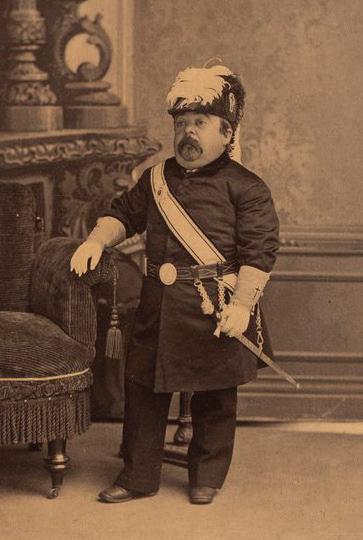
“freak shows.” Previously, these sorts of circus acts were largely seen as degrading, even inhumane, if entertaining for the sake of morbid curiosity. But Stratton’s lively performances, lovely singing voice, talented dancing, humorous demeanor, and even his own generosity and cultured manners, shifted public opinion. More importantly, Stratton’s success affected the way similar acts were portrayed by other circuses.
In 1863 he married Lavinia Warren, also a dwarf and circus performer. Over 10,000 people attended their wedding reception. Their wedding was called the “Fairy Wedding,” with George Washington Nutt or “Commodore Nutt” as Stratton’s best man and Minnie


Warren as Lavinia’s maid of honor (both of whom were dwarfs). Charles and Lavinia had one child together, a daughter, Minnie Warren Stratton.
They lived well. Stratton was quite wealthy. He and his wife owned fine clothes and Stratton even bailed Barnum out of financial troubles at one time, after which Barnum and Stratton became business partners. Stratton
retired from entertainment in 1878. He died of a stroke on July 15, 1883, at the age of 45. Over 20,000 people attended his funeral at Mountain Grove Cemetery in his hometown of Bridgeport, Connecticut. His grave is a large stone structure with a spire upon the top, mounted by a life-sized statue of Stratton. His funeral was presided over by Saint John’s Lodge No. 3 of Bridgeport.
Stratton was raised to the Sublime Degree of a Master Mason at Saint John’s Lodge No. 3 on October 3, 1862. Unattested rumors – though not disproven – say that he was raised alongside a Mason who was six-feetthree-inches. Five days later, on October 8, he was exalted a Royal Arch Mason at Jerusalem Chapter No. 13. He was greeted as a Royal and Select Master at Jerusalem Council No. 16 on July 21, 1863, and two days later, on July 23, knighted in the Order of the Temple at Hamilton Commandery No. 5. All of these Masonic bodies are located in Bridgeport, Connecticut. In 1866 he become a 32° Scottish Rite Mason at Lafayette Consistory, in the Northern Jurisdiction of the Ancient and Accepted Scottish Rite.
Sir Knight Stratton is one of three Masons in the running for the title of “shortest Freemason,” in what Ray V. Denslow refers to as “the midget contest.” Stratton was 2 feet 11 inches when he was made a Mason. Another in the “contest” for the title of “shortest Freemason” is Vance Swift, who was 2 feet 2 inches when he was raised at Pythagoras Lodge No. 335 in New Albany, Indiana, in 1943. The other is Reuben Allen Steer, who was 2 feet 10 inches when he was initiated at Friendship Lodge No. 7 in Chepachet, Rhode Island in May 1889 (and served as his lodge’s tiler for fifteen years).
While clearly Bro. Vance Swift takes the title of “shortest Freemason,” as far as we know (it is possible there is another who fell into obscurity or another has become a Mason since Denslow published 1000 Famous Freemasons), neither Brothers Swift nor Steer were Knights Templar, as far as we are aware. Thus, in the absence of evidence to the contrary, Stratton most likely bears the title of the “shortest Knight Templar.”
Statton’s predilection for theatrics, performance, and costume, as part of the circus, readily underscores his attraction to Freemasonry. And, we might suppose, if he ever saw Knights Templar on parade or in a public ceremony, he might have said to himself, “I want to wear that outfit and funny hat. I would look good in one of those hats!”
Whatever reason he became a Mason –which must be an interesting story in and of itself – Masonry seems to have suited him. He was much admired by many Masons throughout his life. KT
HAt the age of thirty-three, Colonel Horace S. Roberts would become the youngest Grand Master in the state’s Masonic history.
orace S. Roberts was born March 21, 1828, in Rochester, New York. He came to Detroit at an early age and soon became a messenger boy in the Michigan legislature, located in Lansing. Roberts received his education in the Detroit public schools, and later became a private secretary to Governor Barry in 1850 and 1851.
Roberts was raised a Master Mason on August 4, 1849, in Lansing Lodge No. 33. He was later elected Worshipful Master of Union Lodge No. 3 on March 3, 1859, a position he held for the next six years. Roberts was also a Royal Arch Mason of Capital Lodge No.9 in Lansing and High Priest of Peninsular Lodge No.16 in Detroit. He became a Knight Templar in Detroit Commandery No.1 on September 10, 1852.
Roberts attended the Michigan Grand Lodge session in 1861. At the age of thirty-three, Colonel Horace S. Roberts would b ecome the youngest Grand Master in the state’s Masonic history.
As a young man, Roberts served in the Mexican War and was noted for his efficiency and bravery. He returned to Detroit after the Mexican War and was elected a city clerk in 1853. At the end of his term, he worked in the mercantile business.
Roberts accepted a position in the U.S. Customs House at Detroit. In 1857, he was elected Register of Deeds for Wayne County and served in this position for four years. It was during this time that Roberts became an active member of the Detroit Light Guard.
When Fort Sumter fell at the outbreak of the Civil War, Roberts was made a Captain when he tendered his services to Governor Blair and raised a company of volunteers. The company was known as the Michigan Hussars and formed part of the 1st Michigan Regiment, which started for the front on May 13, 1861. After a three-month term of service, Roberts was commissioned a Lieutenant Colonel on August 10, 1861. On April 28, 1862, Roberts
was made a Colonel and succeeded to the command of the regiment.
During the Civil War, Roberts led his regiment in the battles of Mechanicsville, Gaines Mill, Peach Orchard, Savage Station, White Oak Swamp, and Malvern Hill. He commanded his regiment at the second battle of Bull Run, and, on August 30, 1862, he lost his life in making a desperate charge with his regiment.
Moments before his death, Roberts’s final words were, “I trust Michigan will believe that I tried to do my duty.”
Robert’s Masonic brethren donated the funds that were used to build an impressive marble memorial that resides in Elmwood Cemetery Detroit, Michigan. On the memorial etched in marble is the Masonic square and compass, Cryptic Council, and Knights Templar cross with crown. Below the square and compass are the words “Grand Master 1861.” On the east side of the memorial are the memorable words, “His body fills an unknown grave.”
After Roberts’s death, the Detroit Tribune published these final words, “Roberts fills a hero’s grave, lamented by all who knew him, but remembered by his character and patriotic sacrifices for country. Colonel Roberts was always a devoted Mason and occupied a high position in that order and in the hearts of its members.”
In respect to Colonel Robert’s memory, on the late afternoon of August 30, 2022, I removed my Masonic Knights Templar sword from its scabbard and placed it on his memorial, exactly 160 years from the date when Roberts fell in battle. KT
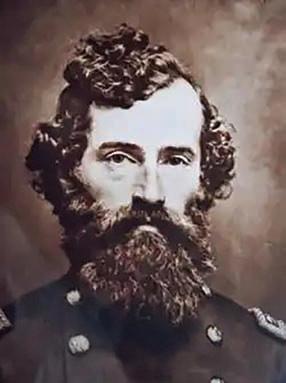

 Photos provided by Michael Franck Adobe Stock Image
Photos provided by Michael Franck Adobe Stock Image

This is a study of David and Solomon in their roles as both kings and builders of the Jewish United Kingdom. Many degrees throughout Masonry relate to the building of Solomon’s Temple and the lifelong lessons that we, as Masons, are taught. While we may be familiar with the allegory of these degrees, we may not be aware of the historical as well as the Biblical details on which these degrees are based. The objective of this study is to examine the historical evidence of these two men, but also to show how their lives and the building of the Temple provide a foundation for much of the teachings of Masonry.
In 1406 B.C. the Hebrew Israelites crossed the River Jordan into Canaan, present day Israel. Although the Israelites were divided into twelve different tribes, one thing that unified them as a people was a common monotheistic belief. This belief system was well established and comprised the first five books of the Bible, referred to as
the Pentateuch.
While the Israelites saw themselves as one people, organizationally there was no strong central government. The tribes could be described as a loose confederation. The Israelites practiced their religion in the same way, largely administered at the tribal level, and joined forces as a militia in times of war.
It wasn’t until 1020 B.C. that a decision was made to create a monarchy electing Saul king of all twelve tribes in what is referred to as Israel’s United Kingdom. Though Saul proved to be a capable military leader during his twenty-year rule, he failed to garner popular support. He was unable to establish a centralized government. Following a defeat against Israel’s arch-enemies the Philistines, Saul committed suicide and was succeeded by King David.
Like Saul, David was a warrior. But under David, the
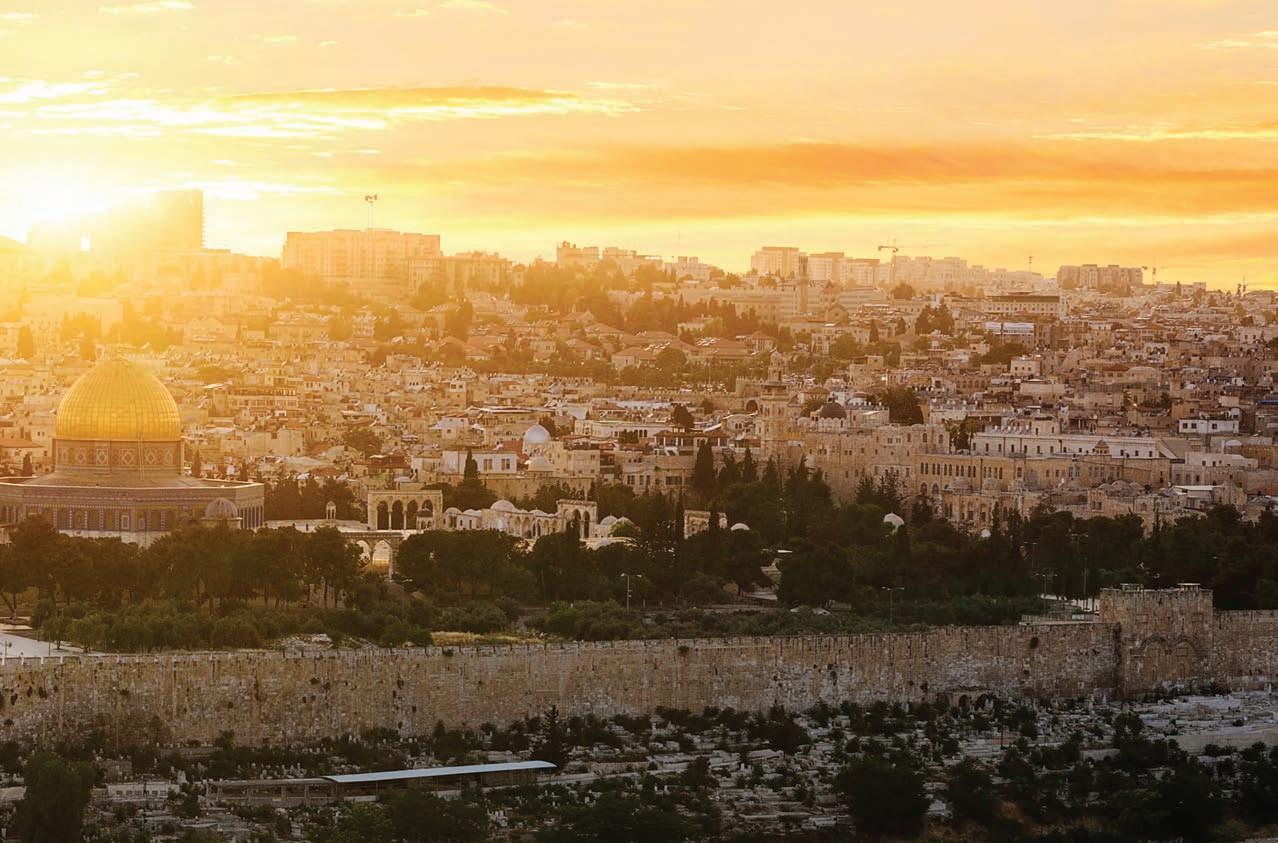
kingdom was consolidated and the Judaic religion was better codified across the tribes.
David was first anointed as King of Judah, comprising the two most southern tribes, viz. Judah and Benjamin. As the new ruler, he faced a number of different issues that directly impacted his new kingship. First, he needed to create a strong and unified kingdom combining Judah with the ten northern tribes. Second, he needed to improve the army by replacing the unorganized militia. And third, he needed to centralize governance under monarchical authority that preempted tribal opinionating. And, fourth, he needed a capital city to serve as the seat of his authority.
David addressed the first two issues by reorganizing the military with leadership provided by his thirty “mighty men.” This was a core group modeled along the lines of professional soldiers, dedicated to David, who
served as officers to lead the tribal militias. With a stronger and more organized military, David set about forcing foreign peoples from the borders of his country. At the time, the Israelites had settled in what is known as the “high places,” hills and less desirable areas of the country. Philistines controlled the lower, more fertile valleys. In a series of battles, David defeated the Philistines and drove them from the plains thus allowing the Israelites to settle there and develop more sustainable forms of agriculture to support the kingdom.
David then set about determining a location to serve as both a governmental and religious center. He chose the small town of Jerusalem located near the northern border of Judah. On the surface, this may not appear as the wisest choice for the new capital. It was over thirty miles from the Mediterranean Sea and not located on a river. It was surrounded by a series of low-lying mountains, removed

from any major trade routes. But Jerusalem did have four major advantages: an unusual supply of water from natural springs; deep valleys surrounding the city made it a natural fortress, and it was centrally located, making it accessible to all tribes and all foreigners; and David succeeded in establishing the city as the religious as well as civic center of the Jewish people.1
Of these four, perhaps the most significant was the last one. Jerusalem’s location was adjacent to Mount Moriah, a mountain ridge that ran through the community. This was the same location where Abraham was directed by God to sacrifice Isaac, thus sealing what is referred to as the Abrahamic Covenant. The significance of this covenant was the creation of a monotheistic religion that over time would evolve into the three worldwide religions of Judaism, Christianity, and Islam. David’s new capital of Jerusalem would become known as the City of David.
Following seven years as the King of Judah, David unified the other ten tribes into a united kingdom and reigned over them for the next thirty-three years. During this time, he expanded the borders of the country and strengthened his kingdom by military and diplomatic means. Israel, surrounded throughout antiquity by powerful empires, strengthened to the point of becoming a regional power.
During the reigns of Saul and David, Samuel, an Old Testament prophet, seer, and judge, exhibited great influence over these two kings. He anointed both men prior to becoming kings and served them as God’s messenger. In this capacity, he was the most significant religious leader among the Hebrews. When Samuel died in 1012 B.C. there was a void in religious leadership and, to a certain extent, David assumed some of this role. (In other countries, cultures, and time frames, a king’s responsibility was that of political and military leadership, while religious authority was carried out by a priestly cast.) With Samuel’s death, David assumed a number of roles typically performed by the priesthood:
He conflated the regal and the sacerdotal role in a way which was never possible for Saul. Samuel had no immediate successor and much of his spiritual authority devolved on David. David, despite his occasional wickedness, was evidently a man of deep religious feeling. Like his son and heir, Solomon, he had many gifts, including a strong artistic imagination. The tradition that he was a musician, a poet and psalmist is too strong to be rejected. The Bible records that he took a personal part in ritual dancing.2
David was also a godly man having authored seventy-five of the 150 chapters in the book of Psalms, many of which were hymns.
From the time Moses received the Ten Commandments, the Ark of the Covenant was the primary cult
1 “Four Reasons King David Chose Jerusalem as Israel’s Capital,” International Fellowship of Christians and Jews, accessed May 15, 2022, http://www.ifc.org.news/fellowship-blog.
2 Johnson, Paul, A History of the Jews (London: Weidenfeld and Nicolson, 1987), 55.
object of Judaism. “The ark of God, which is called by the Name, the name of the Lord Almighty, who is enthroned between the cherubim that are on the ark” 2 (Sam. 6:2 [NIV]). For 400 years, the Ark was housed in what was known as the Tabernacle, a movable tent-like structure located in various religious centers throughout the country. David made two significant decisions that would change Judaism: He moved the Ark to a permanent resting spot within the capital. And he planned to build a temple where it would be placed.
The Temple would become the religious focal point whereby the Hebrews would observe and celebrate holy days in addition to making blood sacrifices.
It is interesting to note that David took an active part in what would normally be considered priestly activities. When the Ark was moved to Jerusalem, David was a part of the retinue accompanying it. “David, wearing a linen ephod, danced before the Lord with all his might, while he and the entire house of Israel brought up the ark of the Lord with shouts and the sound of trumpets”( 2 Sam. 6:14-15 [NIV]). Not only did David take an active part in transporting the Ark – he also dressed like a priest. “David wore a linen apron, the priest’s apron, possibly because it was a religious celebration.”3
The second part of David’s plan, to make Jerusalem the religious center of Judaism by building the Temple, was thwarted. “David said to Solomon: ‘My son, I had it in my heart to build a house for the Name of the Lord my God.’ But this word of the Lord came to me: ‘You have shed much blood and have fought many wars. You are not to build a house for my Name, because you have shed much blood on the earth in my sight” (1 Chron 22:7-8 [NIV]).
David brought peace and prosperity to Israel. As a result, David’s household grew. As was the practice at the time, diplomatic ties between countries and tribes were often solemnized by marriage. With David’s many military victories, his country had vastly expanded, as had the number of his wives, thus ensuring peace with other leaders. To accommodate his many wives and growing family, one of David’s building efforts was to build a palace. In a similar fashion, as the size of government grew, buildings had to be built to accommodate the newly created administration.
Although David was not engaged in the actual building of the Temple, he did make several contributions. When he took Jerusalem, he purchased a threshing floor that would be the site on which the Temple would be built. This location is significant. Traditionally, it was taken to be the site where God tested Abraham, preventing at the last minute the sacrifice of his son, Isaac.
David also established a very important commercial alliance with Hiram King of Tyre (once known as Phoenicia and today, Lebanon). “Now Hiram king of Tyre sent messengers to David, along with cedar logs and carpenters and stonemasons, and they built a palace for David” (2 Sam. 5:11 [NIV]). An exchange of goods and services
3 Life Application Bible - New International Version, Wheaton, IL: Tyndale House, 1991, 2 Samuel 6:14 fn, 698.

King David returns from battle. (AI generated image.)
was agreed upon between David and Hiram, trade which continued after the Temple was completed. In 1 Chron. 22:1-4, David also begins to accumulate workmen and building materials, including iron, bronze, and cedar, to be used in constructing the Temple.

Solomon ascended the throne in 970 B.C. The planning phase of the Temple took four years. As stated in various Masonic degrees, Hiram King of Tyre was a major contributor to the construction process. “When Hiram King of Tyre heard that Solomon had been anointed king to succeed his father David, he sent his envoys to Solomon, because he had always been on friendly terms with David” (1 Kings 5:1-2 [NIV]). I Kings Chapters 5
and 6 and II Chronicles 2 and 3 detail the arrangements of material and labor from King Hiram as well as the construction of the Temple.
The actual construction of the Temple lasted seven years and was completed in 959 B.C. Like his father before him, Solomon took an active role in religion. Upon completion, the consecration of the Temple was monumental. Solomon called all the leadership and men of Israel to attend. The Ark was ceremoniously placed in the Temple, sheep and cattle were sacrificed in such numbers that they could not be counted. Solomon, in front of all in attendance, gave a blessing and then prayed before the altar. “It is noteworthy that Solomon himself
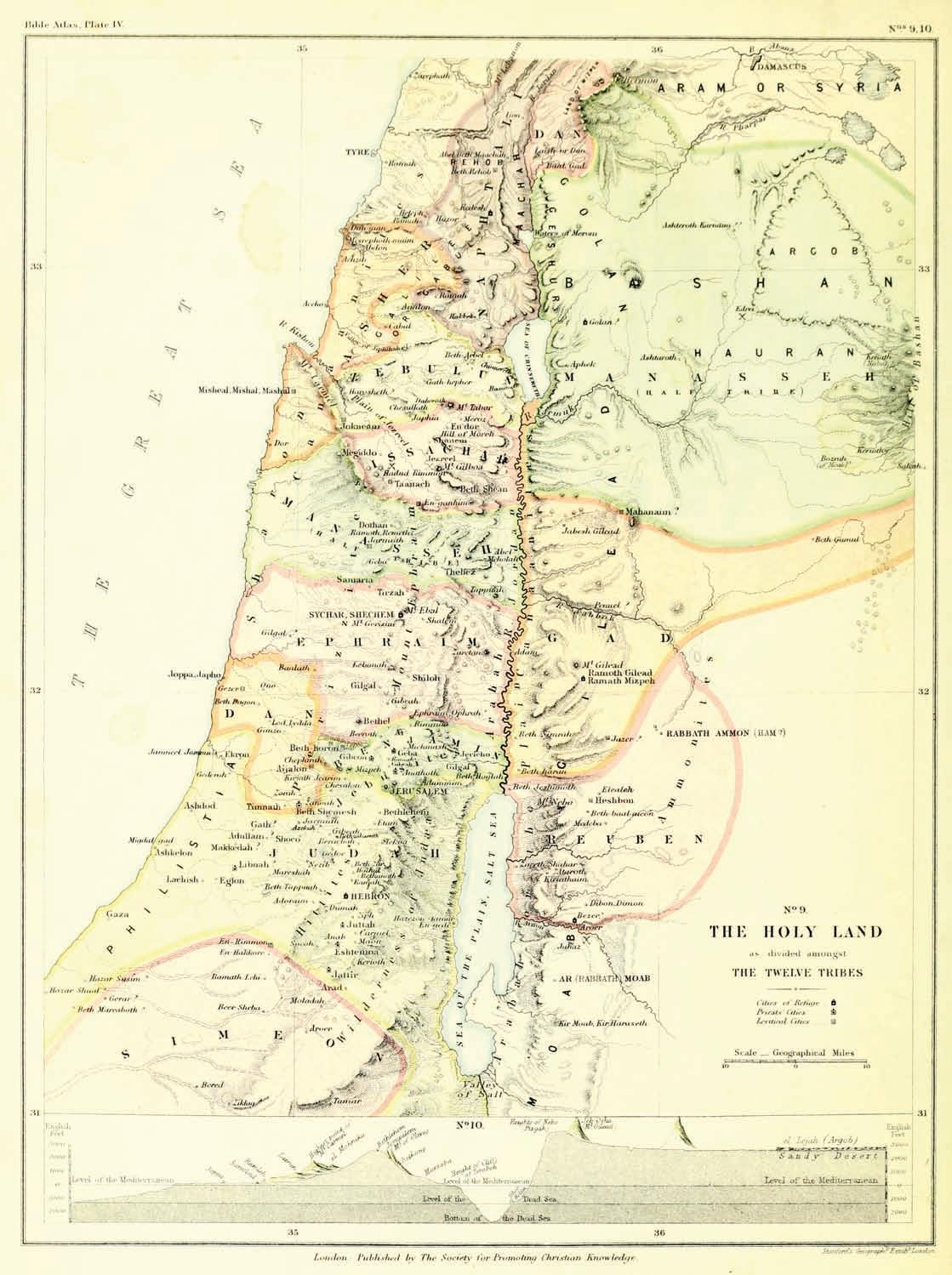
led the dedication. Though it involved a sermon, prayer, and pronouncement of blessing, he did not call on a priest or prophet to take the lead. He did it all himself. It was appropriate for him to do so, since he was king. In so doing, he also demonstrated confidence that he was himself in a proper relation to God spiritually.”4
While no historical evidence exists for David or Solomon’s contribution in designing the Temple, what is known is that Solomon, like his father, caused a major shift in transforming Judaism. The Temple became the focal point of the Judaic religion, replacing holy places scattered throughout Israel. The building itself was grand in scale, utterly awe inspiring, and contrasted with the simple Tabernacle previously used to house the Ark. Blood sacrifices became a much more significant part of the belief system, all to be performed at the Temple. Ornamentation of the Temple and all the religious artifacts required to perform the newly created rituals were additions to the faith. The significance of the Ark would be further elevated once it was placed in a permanent resting place in the Temple and seen as God’s resting spot-on earth.
In Chapter 8 of the First Book of Kings, Solomon emphasized that God was in the Temple: ‘I have surely built thee an house to dwell in, a settled place for thee to abide in for ever….’ He effected a compromise between his state needs, and his understanding of Israelite monotheism, by supposing not a physical but a symbolic presence of the Almighty: ‘That thine eyes may be open toward this house night and day, even towards the place of which thou has said, My name shall be there.’ This was the way in which later generations fitted the Temple into the faith, the presence of the name of God alone in the Holy of Holies generating a powerful divine radiation, called the shekhinah, which destroyed any unauthorized person who approached it.5
Blood sacrifices had long been a part of ancient religious practices throughout the world, including Judaism. As a part of the Mosaic Laws, as written in the Torah (the first five books of the Old Testament), blood sacrifices were required for atonement and remission of sin. These animal sacrifices also became a personal sacrifice as well since worshippers gave something of value in reverence to God. With the building of the Temple, blood sacrifices became even more significant to the Jewish faith. Early in Solomon’s reign, “The King went to Gibeon to offer sacrifices, for that was the important high place, and Solomon offered a thousand burnt offerings on that altar” (1 Kings 3:4 [NIV]). In this case the offering was 1,000 head of cattle.
From today’s perspective we may see this blood sacrifice as pagan, yet on closer examination it is evidence of Solomon’s devotion to God. “That Solomon wished to go to Gibeon to offer the large number of burnt-offerings, and take Israel’s leaders with him, shows that he
4 Wood, Leon J., Israel’s United Monarchy (Grand Rapids, MI: Baker Book House, 1979), 319.
5 Johnson, 64.
was in close and proper relation with God at the time.
. . . The burnt-sacrifice pictured the full dedication of a person to God, the sacrifice being completely consumed by fire. Solomon, therefore, wanted to demonstrate that he was dedicating himself in the manner and he wanted his leaders to do the same.”6 It was on this same journey to Gibeon that God appeared in a dream to Solomon and asked him whatever he wanted. Solomon, in an act of humility responded, “So give your servant a discerning heart to govern your people and distinguish between right and wrong” (1 Kings 3:9 [NIV]).
With the Temple now serving as the religious focal point of the unified country, individual tribal holy spots were replaced. Priest and Levites who had previously served in the individual tribes were now concentrated in Jerusalem in service to the Temple. It also resulted in Jerusalem becoming a destination for all Hebrews as a site of pilgrimage and religious observances. With Jerusalem now both the religious as well as the governmental center, it also became a business and commercial hub. The grandeur of the Temple, Solomon’s adjacent palace, and newly constructed government buildings all contributed to a feeling of national pride and unity.
The building of the Temple also had significant impacts, not only on Judaism, but also on the country of Israel. During Solomon’s forty year reign, Israel enjoyed a period of peace and prosperity. Israel’s central location between Egypt, Asia Minor, and Mesopotamia resulted in trade routes connecting the region. Commerce flourished. Wealth poured into Solomon’s treasury: conquered territories were required to pay an annual tribute, and foreign countries sought favor with expensive gifts.
Like his father before him, Solomon continued to take an active role in his religious beliefs throughout his life. His lasting contribution can be seen in the three Old Testament books that he authored: Proverbs, Song of Songs (often referred to the Song of Solomon), and Ecclesiastes. Each of these books has a different theme showing both Solomon’s skills, intelligence, and human frailty. In Proverbs, Solomon exhibits his famed wisdom which is of value to all men. In the Song of Songs, he displayed his poetic side, often in the form of love sonnets. In Ecclesiastes, he reflects on his long life and the mistakes he made, not the least of which was the uselessness of human ambition.
When Solomon died, the Unified Monarchy dissolved. Solomon’s death left a vacuum and tribal factionalism split the ten northern tribes, which became known as Israel, from the two southern tribes comprising Judah. At various times the two independent countries joined forces in time of war and allied themselves with other countries to war against one another. The United Monarchy from Saul to David and finally Solomon lasted one hundred years.
The lasting impact of David and Solomon in history and Masonry is two-fold. Both were instrumental in building a strong unified country and capital. Under their 6 Wood, 309.
combined leadership they created a sense of national unity and pride. That sense of national identity was so impactful that, after nearly 2,500 years of foreign conquest, the Jewish state was reestablished in 1948.
The creation of Jerusalem has had an even greater impact on world religions. Jerusalem is often referred to as Zion or the City of David, with a Judaic or Jewish connotation. Physical evidence of the exact location of Solomon’s Temple is evident today, referred to as the Temple Mount and Western Wall. It was here that Jesus Christ visited the Second Temple (King Herod’s Temple) multiple times. In sight of this same location, he carried his cross to Golgotha where he was crucified, thereby establishing the basis of Christianity. Islam is also directly tied to this location with adherents believing that Mohammed ascended to heaven on his Night Journey from where the Dome of the Rock is located atop the Temple Mount. For each of these three monotheistic religions, the location of the original Temple is foundational.
Masonry draws many principles from the building of Solomon’s Temple. Whether the allegories are based on building the Temple, the phrase making good men better, or addressing God in prayer as the Great Architect of the Universe, all tie Masonry to the work of building. As Masons, we strive to improve ourselves from the rough ashlar to the perfect ashlar. We are made familiar with building applied in our degrees. The construction of the Temple is symbolically set in Masonry to parallel man’s personal struggles and growth. Just as man’s personal journey is long and filled with difficulty, so too was the building of the Temple. It took strong, determined visionaries who were devoted to God to plan and build that great edifice. David and Solomon possessed all the required attributes to complete the project: David, with his creativity in planning and accumulation of supplies, and Solomon, in his faithful oversight of the construction and his dedication to God. From it we draw a similar parallel, for we too are builders, not of stone or wood, but of our own personal character.
David and Solomon were similar in different ways. Both possessed great leadership abilities. They were big dreamers and visualized what had not been created,
whether nations or structures. They were godly men who demonstrated their devotion frequently. They both made mistakes. They both sinned. Yet both found favor with God.
Both were nation builders and priest-kings. Both left a legacy that is directly tied to modern nationhood and the major world religions. Both exemplified the value of reverence for God by building the Temple and enhancing our monotheistic religious belief. KT
Bruce, Frederick F., Israel and the Nations: From the Exodus to the Fall of the Second Temple. Grand Rapids, MI: Wm. B. Eerdmans Publishing Co., 1963.
Clampitt, Chuck. “King Solomon’s Temple: Then and Now.” Knight Templar, July, 2015.
Gutmann, Joseph, ed. The Temple of Solomo n. Missoula, MT: Scholars Press, 1976.
International Fellowship of Christians and Jews. “Four Reasons King David Chose Jerusalem as Israel’s Capital.” Accessed May, 15, 2022. http://www.ifc.org. news/fellowship-blog
Johnson, Paul, A History of the Jews . London: Weidenfeld and Nicolson, 1987.
Josephus, Flavius, Complete Works. Translated by William Whiston. Grand Rapids, MI: Kregel Publications, 1974.
Klein, Mina C. and H. Arthur Klein. Temple Beyond Time: The Story of the Site of Solomon’s Temple at Jerusalem. New York: Van Nostrand Reinhold Co., 1970.
Life Application Bible - New International Version, Wheaton, IL: Tyndale House, 1991.
McKenzie, John L. “Samuel Hebrew Prophet.” Accessed May 15, 2022. Britanica.com/biography/Samuel-Hebrew-prophet
Mare, W. Harold, The Archaeology of the Jerusalem Area. Grand Rapids, MI: Baker Book House, 1987.
Wood, Leon J., Israel’s United Monarchy. Grand Rapids, MI: Baker Book House, 1979.




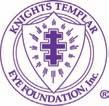
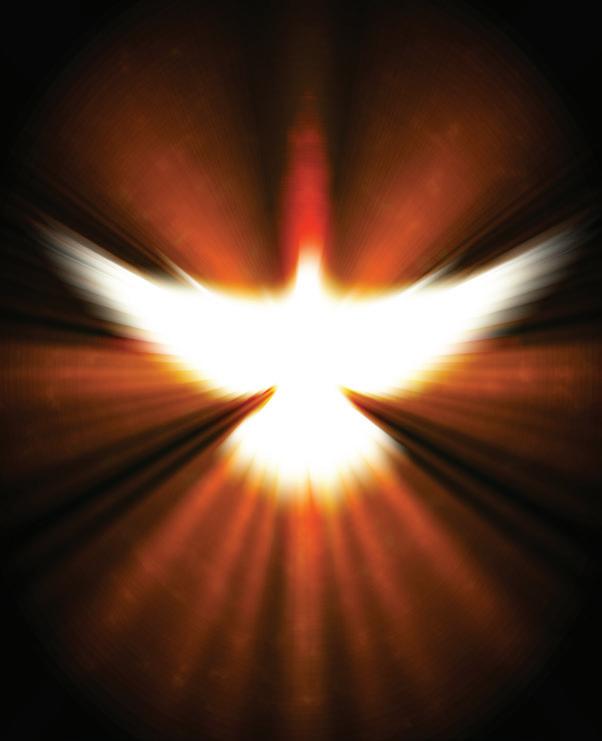
A faithful reproduction of the handwritten manuscript of the Orders of the Temple made by George Connor in 1882, a decade before the Orders were standardized across the Grand Encampment. Connor was a PGC and PGM of Tennessee. His skill and effort in recording the Orders are of historical relevance, but also constitute a valuable work of art. This book records the way the Orders were conferred chronologically, with the Order of Malta conferred last. Includes commentary and comparisons with the current ritual by S.K. George Marshall, KGT, PGC. Original manuscript is in the archives of Lookout Commandery No. 14 in Chattanooga, TN. All proceeds benefit the Knight Templar Eye Foundation. Order online at:
https://www.ktef.org/items/a-templar-monitor
My father, William O. Van Doren, was Master of my mother Lodge, Lake Harriet No. 277 in Minneapolis, MN in 1950. He “came out of retirement” to raise both my older brother, Bill, and me to the Master Mason Degree. The latter was in October of 1967. Unlike many Past Masters, my father was a very taciturn man who never offered advice to me about anything substantive, be it choice of sports, choice of college, choice of career, or anything else. Therefore, when he did offer a word of advice, it was such a singular event that I took it to heart and thought about it over and over again. Actually, there were exactly three times in our relationship when this occurred. They were so important and wise, I’d like to share them with you
1. Surround yourself in Life with people that are smarter than you, more successful than you. Study them and learn from them so that, when an opportunity comes along, you are prepared to make the most of it.
This has been important to me in every area of my life. You gain so much from watching and associating with successful people. Learning from them enables you to recognize opportunity when, sometimes disguised as opposition, it subtly sneaks by. Aware of it, you can take advantage of it. This was true for me in my military career, my professional career as a psychologist, and even in my social relationships. I was fortunate – I married a woman who is smarter than me. She has many insights that have helped better me as a person.
Successful people are not unwilling to share the secrets of their success. Most people like to talk about themselves and, from personal reference, help others. Most are willing to “take you under their wing” and give personalized attention and instruction. Cultivating such relationships knocks chips off the proverbial rough ashlar…. Not only does associating with such people teach you new tools to fabricate your own destiny; in pursuit of their esteem, you hold yourself accountable. You don’t want to let them down.
2. You can learn something from everyone. Literally, everyone!
This is also an important educative tool… but you have to have the courage and humility to ask questions. In my career, especially when participating in high level organizational consulting when first visiting a new client company, I asked literally everybody I met questions. For example, I might start by asking the gate guard, “This is my first visit here. What do you folks do here?” And then listen carefully.
Again, the same question for the receptionist. You could begin to learn what worked for that organization and what were problem areas that needed attention. Often, the CEO or President would be unaware of how deeply company culture is embedded with either positive attitudes or negative ones. Primarily because so many people are unwilling to deliver news – good or bad – directly to the boss. That leaves the leader in a bubble, an echo-chamber of self-reinforcing impressions about the effectiveness of the organization in accomplishing its mission.
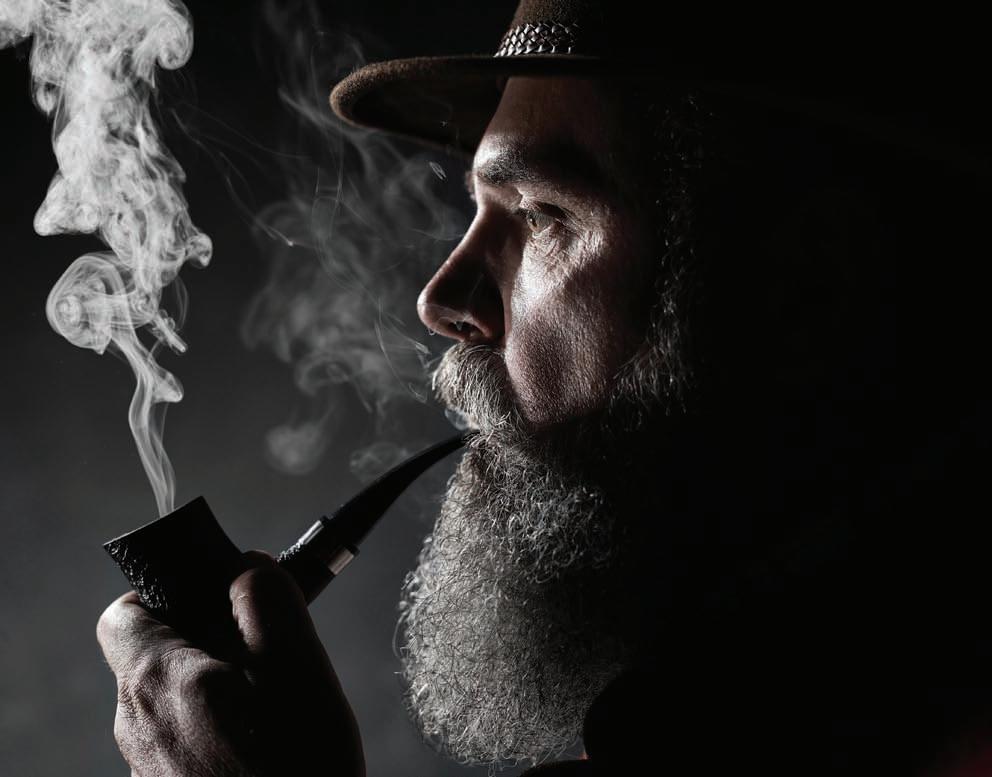
Two real-life examples will suffice to convey how this is helpful.
a. When visiting a major manufacturing plant of a well-known Fortune 50 company, every individual to whom I asked the question replied with the statement, “We build the best [insert product] in the world.” They were right. And when I went out on the midnight shift at about 3:00 a.m. to watch the assembly line in action, I saw that each workstation was manned by a single individual who acted compulsively one step at a time, with such precision and cleanliness you could have eaten off the floor. When using a tool from their personal workstation cabinet, they would wipe it clean and anoint it with a tiny bit of oil before returning it to the cabinet. The resulting product is well known to never fail – and that is a life-saving statement.
b. When getting gasoline at a station in New Jersey, where drivers are not allowed to
pump their own gas, I watched the attendant clean my car windshield in a most unusual manner. I asked him, “Why are you using the squeegee like that?” He answered, “If you do it like everyone else, you get marks left behind on the glass and its harder to see ahead. This way, there are never marks or streaks left behind and it is far better.” Again, he was right. My wife said, as I pulled away, “You are incorrigible. You’ll ask something from everybody and anybody!” My father’s advice has proved invaluable to me.
3. Try and be kind to others and do something that is kind to someone every day.
This has been the source of great spiritual uplift for me. It doesn’t have to cost anything, although it could. A simple phone call to someone who thinks that no one cares or remembers them can make their life so much better. A
note to someone you haven’t had contact with – sometimes in years – can reignite a wonderful friendship that has lain fallow for a long time. Saying a word of congratulations or of appreciation can reinforce the best behaviors – do not make the mistake of thinking, “Well, I’m certain he knows how good at that he is and everybody is probably telling him every day.” That is often the person who never gets an “attaboy” and feels, deep down, unappreciated.
These simple statements offer a constant opportunity to improve your own brotherly refinement of your personal rough ashlar. Don’t miss out on it. It will make your own day much brighter and rewarding.
In summation, although saying little, my father gave three statements that have been life changing for me. He had a vision of wisdom and self-improvement that stood everyone in good stead – including, most especially, me. KT
Past Supreme Worthy President (Mrs. Fred) Carole Buxton discarded the mantle of earthly life and passed into life eternal peacefully in her sleep on October 19, 2023. Services were held on November 9, 2023, at Eternal Valley Memorial Park in Newhall, CA.
Our beloved Sister was a faithful member of Los Angeles Assembly No. 42 and of Santa Ana Assembly No. 62 upon consolidation. She served as Supreme Worthy President in 20012002.
Her theme was to “Find Peace in our hearts, Harmony in our friendships, and Abundance of love with others.” Her scripture was Psalm 24:1, “The earth is the Lord’s and the fullness thereof, the world and all who dwell therein.”
We take comfort knowing that she is now in the loving embrace of her Creator.

The Supreme Worthy President, Ms. Tara Shulas, has instated a new tier for donations to the Knights Templar Eye Foundation. Recognized tiers already include Faith ($25), Loyalty ($50), and Love ($100). The new tier is the Cross and Crown for gifts of $250. Contributors at the Cross and Crown tier will receive a new Cross and Crown brooch, pictured. Remember to make your donation through your Assembly Recorder to ensure your Assembly is credited for the gift.
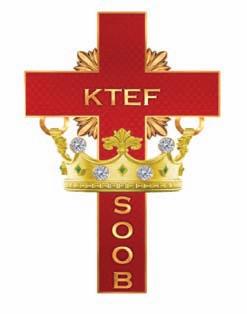
Ms. Kimberly Burnett, Columbus No. 79 and Cleveland No. 15, OH; (Mrs. Keith) Sandy Dean, Ocala, No. 249, FL/Georgia State Assembly; (Mrs. Thomas) Linda Derby, Santa Anns No. 61, CA/Waco 199, TX;(Mrs. William) Janice Freitag, Cleveland, No. 15, OH; Ms. Tara B. Shulas, East Liverpool, No. 71, OH; (Mrs. Basil) Deana Plemons, East Liverpool, No. 71, OH; (Mrs. Charles M.) Susan Thames, Kingsport, No. 244, TN; (Mrs. Randy Johnson) Donna Swain, Fredericksburg No. 266, VA/Kingsport No. 244, TN; (Mrs. Joseph) Barbara Bonjovi, Fredericksburg No. 266, VA/ Kingsport No. 244, TN; Ms. Charlyn Lewis ( In memory of (Mrs. Stan) Darlene McIrvin), Sheridan No. 131, WY; (Mrs. Richard) Linda Kostenbauer (Also in memory of Mrs. McIrvin), Sheridan, No. 131, WY; (Mrs. Bud) Tammy Forester, Dallas No. 63, TX;(Mrs. Billy M.) Murial Rowell, Dallas No. 63, TX.

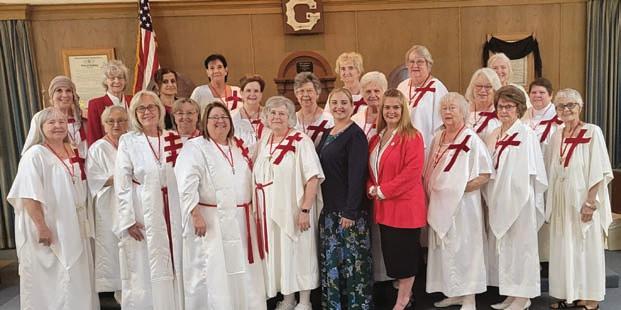
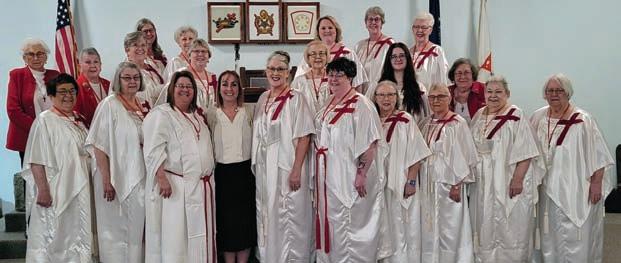
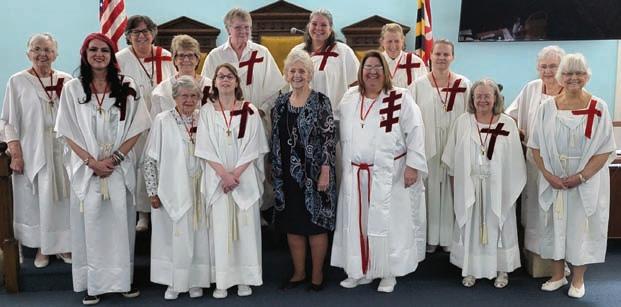

(1) Columbus Assembly No. 79, OH – Front row: member, Ms. Kim Burnett, PSWP; Mrs. Chris Ashton, initiation candidate; Mrs. Barbara Stephens, WP; Mrs. Jon Spann, PSWP; member. Back Row: Ms. Julie Fisher, Supreme Courtesy Committee; Mrs. John Mashburn, Supreme Necrology Committee; Mrs. Dan Cogley, Supreme Examining Committee Chairman; member; Mrs. James Baughman, Supreme Mileage Committee Chairman; member; member.
(2) Kingsport Assembly No. 244, TN – Front Row: members, Mrs. Charles M Thames, PSWP, SWP. Mrs. James Pulley, WP & Supreme Inner Guard, Mrs. Jake Conn, Initiation Candidate, members. Second Row: members, Mrs Gary Coates, Supreme Mileage Committee; member. Back Row: members, Mrs. Herbert Kennedy, Supreme Benevolent Committee Chairman, Mrs. Charles Doyle, Examining Committee, member.
(3) Omaha Assemlby No. 91, NE – Front Row: Mrs. Phil Edward, Supreme Registration Committee, Mrs. Ronald Stites, Supreme Outer Guard, SWP, Mrs. Mohan Krishman, candidate, Mrs. George McMullin, WP, Mrs. Daniel Marr, Supreme Preceptress, member, member, Ms. Beverly Pickering, Sup Credentials- Chairman, member; Back Rows: members.
(4) Westminster Assembly No. 245, MD – Front Row: two members, Mrs. Kelly Nobile, WP, Mrs. Patricia Hodgson, candidate, SWP, members. Back Row: Members.
(5) East Liverpool Assembly No. 71, OH – Front Row: 2 members, Ms. Alissa Reinhardt, candidate, 2 members. Back Row: 2 members, SWP, Ms. Stephanie Allen, WP, Mrs. Joachim Van Leeuwen, Supreme Benevolent Committee.

“Take God as your partner in every enterprise.”
– Dr. Norman Vincent Peale
As I think about all the positive things that are happening with this year’s campaign, it makes me think of the late Sir Knight Dr. Norman Vincent Peale, Past Grand Prelate of the Grand Encampment. Dr. Peale was an author, minister, founder of the publisher Guideposts, and is best known as the father of positive thinking. He is the author of that famous book The Power of Positive Thinking. Which brings me to some of his famous quotes.
First, we as Knights Templar need to “Keep thinking, keep interested, keep praying, keep dreaming” how the Knights Templar Eye Foundation will become stronger and stronger as a foundation to help others.
Second, we as Knights Templar can’t give up “It’s always too early to quit.”
Third we as Knights Templar need to depend on God for His help, and “Ask for what you want, but be willing to take what God gives you. It may be better than what you ask for.”
With all the positive accomplishments our foundation has made in the past it should make all of us Sir Knights proud. We have endowed professorships at premiere research establishments: Mayo Clinic, Rochester, NY; Wilmer Eye Institute, Baltimore, MD; Baylor College of Medicine, Houston, TX; Vanderbilt University Medical Center, Nashville, TN; Children’s Hospital Los Angeles, Los Angeles, CA; and Dean McGee Eye Institute, Oklahoma City, OK. These are hubs from which real progress in ending childhood blindness extends.
This year’s campaign has been fruitful so far. As of February 13, the campaign has raised $1,105,596.31. With wills and gifts we are sitting at $6,709,349,91 and on our way to over $7,000,000 in contributions for this campaign year! With the campaign coming to an end on April 30, if you have not already contributed, would you please consider doing so now, and help the 56th Annual Voluntary Campaign be a success?
To help provide incentives to our Sir Knights, the Eye Foundation has many special award programs for donations which include a special giving level, as well as accepting Memo -
rial Donations, Honorary Gifts, and Trust, Wills and Bequests. See sidebar, right.
All contributions received in the Eye Foundation office in Flower Mound, Texas, postmarked on or before May 15, will be counted.
“But this I say, He which soweth sparingly shall reap also sparingly; and he which soweth bountifully shall reap also bountifully” (2 Corinthians 9:6).
In Christ Service,
 Paul W. Friend, PGC, KTCH Chairman, 56th Annual Voluntary Campaign
Paul W. Friend, PGC, KTCH Chairman, 56th Annual Voluntary Campaign

LIFE SPONSOR – Available to Sir Knights (members of a Commandery) who donate $30.
ASSOCIATE PATRON – Available to any person or organization that makes a donation of $50.
PATRON – Available to any person or organization that makes a donation of $100. Payments for Life Sponsor, Patron, and/or Associate Patron will exempt your Grand Commandery from further assessment to the Knights Templar Eye Foundation, Inc.
GRAND MASTER’S CLUB – One Thousand Dollars enrolls you as a concerned individual in the humanitarian work of the Foundation. The Grand Master’s Club is available to all individuals, whether Templars or others, but not to organizations. Your membership in the Grand Master’s Club entitles you to a lapel pin, an engraved wall plaque, and the Crusaders Cross issued for the first 25 Grand Master Clubs.*
GRAND COMMANDER’S CLUB – You can enroll in the Grand Commander’s Club by sending in your first installment of $100.00 or more. At the time of your enrollment, you will receive a lapel pin and wallet card (signifying your membership). In addition, members of the Grand Commander’s Club pledge to make annual contributions of $100.00 or more for nine more years until the total of $1,000.00 is reached. Once contributions total $1,000.00, the individual is enrolled in the Grand Master’s Club.
*As of 2/1/2015, when 25 Grand Master’s Clubs are reached, a Sword of Merit is awarded.
FLOWER MOUND, TX – The Knights Templar Eye Foundation was pleased to recognize four more Grand Commanderies that have attained 100% Life Sponsorship: Alaska, Colorado, Idaho, Kentucky, North Carolina, and North Dakota.
Gifts of $30 per member are required to make the cut.
Previous Grand Commanderies meriting the distinction include: Utah and Maryland (2022); Illinois, Iowa, and Connecticut (2021); Ohio and Texas (2020); Virginia and Georgia (2017); District of Columbia and Wyoming (2015); Tennessee and Montana (2014); South Carolina and Oregon (1996); Alabama (1995); and New Hampshire (1994).
More than 72% of active members across the Grand Encampment have a Life Sponsor and 106 Commanderies only need a few more gifts of $30 per member to bring more Grand Commanderies to this distinction. KT
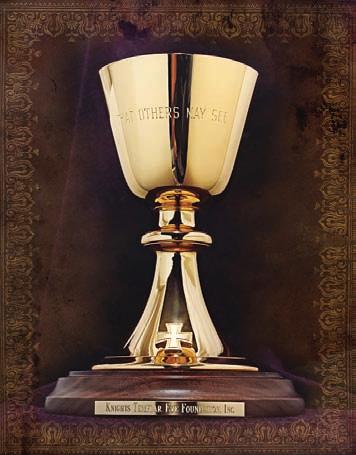
Somewhere in the world
someone goes blind every five seconds
 BY GRAND COMMANDERY
BY GRAND COMMANDERY

NEW ORLEANS, LA – The New Orleans Scottish Rite Foundation, Inc., presented a Golden Chalice to the New Orleans Scottish Rite Temple in support of the Knights Templar Eye Foundation.
“We love to improve vision, through research, education, and supporting access to care,” says Kenneth Bell, General Secretary for the Valley of New Orleans. “The KTEF does an outstanding job in eye care. I hope that this money can assist in finding better cures.”
A one-time donation of $10,000 or more is eligible for the Golden Chalice to commemorate the gift.
The New Orleans Scottish Rite Foundation Inc. joins 128 select donors who have received this award over the last thirty years (the first Chalice was presented on April 22, 1993). KT
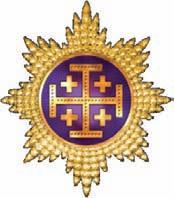






December 2023
AL Benson L. Head Jr.
AL John M. Lamb II
AR John K. Day
AR Levert E. Stringfellow
AZ Fred M. Lohman
CA Ara Maloyan
CA Michael J. Sekera
CO Robert W. Gregory
CO Joseph Magoffin
CO George A. McCollum Jr.
CO Michael Tims
FL Joshua N. Jenkins
FL George G. Matthews
FL Emmett W. Mills
GA Christopher E. Chapman
GA Jeffrey B. Warner
IL Robert W. Bigley
IL Enrique J. Unanue
IN Irvan Boeglin
IN Kevin L. Waldroup
IA Anthony S. Batcheller
IA William R. Clark Jr.
IA John D. Determan
KS Leslie K. Needham
LA Eric T. Harnack
LA James D. Maxey
LA David R. Oelschlager
ME Robert M. Wright
MD Gordon A. Davids
MA/RI John J. Moore
MA/RI Edward J. Newton III
MI Jeffrey M. Lewis
MN John E. Helcl II
MS James A. Birdsong
MO David N. Appleby
MO Danny D. Smothers
MO Kenneth E. Swon
MT Robert L. Docktor
MT Robert M. Hames
MT William R. Price
NH Joseph J. Rella
NH Jason H. Sanderson
NJ Dennis M. Huey
NY Theodore H. Jacobsen
NY Joseph Ruiz
NC William A. Hart
NC Martin J. Spears
OH Eugene N. Bitler
OH David W. Feller
OH William T. Gilmore
OH Randall L. Hahn Sr.
OH Allan E. Mills
OH Scott R. Mobley
OK Robert L. Bradway
OK Gerald K. Hornung
OR Charles Cornell
PA Brandon P. Cooper
PA Blake W. Daniels
PA Brian L. Daniels
PA Gregory S. Magill
PA Nathan C. Minnich
SC Ronny D. Powell
TN Howard I. Thompson
TN James K. Yoder
TX Robert V. Barnes Jr.
TX David R. Finley
TX Michael J. Kuhlmann
TX Harold D. Moore
UT Jason C. Varner
VA Joel T. Bundy
VA Raymond P. Raehn
VA Raymond D. Steele
WI George H. Detweiler
WI Lyle N. Koerner Jr.
WI Joshua T. Sudbrink
January 2024
AL Brian L. Smith
AL Merle L. Wade
AZ Jeffery S. Baker
CA Edwin S. Balao
CA David W. Studley
CA Krassimir T. Tzvetanov
CA Armen Ulyan
CO Grover L. Sardeson
CO Benjamin Williams
CT Alan J. Carlson
CT Eric H. Hoy
DE John W. Merkley
DC Louis N. Abreu III
FL Austin C. Drukker Jr.
FL Charles L. Hollinger
FL David L. Hubbell
FL Charles R. Jordan
FL Bill I. Myers Jr.
HI Roberto M. Sanchez
HI Dustin T. Verity
IL Joseph L. Pieron
IN Randal P. Ellington
IN Charles M. Kostbade
IA Bryce B. Hildreth
IA Thomas D. Lindblom
ME Gregory G. Chapman
ME Llewellyn C. Manter
ME William R. McKibben III
ME Brian S. Messing
ME Robert B. Ward
MD Douglas M. Deiss Sr.
MD Donald E. Jenkins
MD John A. Rafine
MA/RI Ralph I. Sewall
MA/RI Russell W. Wolf
MN Clinton J. Christensen
MN Roberto S. Gardiner
MN Alan Mackenzie
MN Gerald Zierdt
MS Richard C. Spencer
MO Charles A. Bottermuller
MO Bernell C. Raye
December 2023
AL John L. Cobb
AL Jason A. Crowe
AL Michael Kozlik
AR Levert E. Stringfellow
CA Daniel R. Jones
CA Edward L. Tiu
CA John E. Stone
CO Michael Tims
CT David E. Polett
FL Eric V. Figueroa
FL Paul W. Friend
FL Don M. Holcombe
FL Warren A. Kelly
FL John D. Pickford
FL Ronald F. Ranc II
IL Robert B. Dement
IN Derek A. Cheek
IN Charles W. Merlau Jr.
IN Jeffrey J. Oesterle
IN Brian E. Smead
IN Randy J. Smith
KY Stephen M. Cichocki
KY Thomas H. Owen Jr.
ME Jamey L. Gower
ME Stephen E. Nichols
ME Kenneth A. Nott
MD James L. Davis III
MD Gary J. Kennedy
MA/RI Mark E. Brown
MI Dean R. McDougal
MI James D. Rutherford
MO Danny D. Smothers
MT Steven J. Fraser
MT James D. Orestad
NV Eric P. Eldredge
NV Anthony Podloski
NM James E. Steelman
NJ Jeffrey L. Alexander
NC James M. Cone
OH David W. Feller
OH Phillip S. Lipps
MT Jeffrey A. Bolstad
MT E. William Murphy Jr.
MT Kenneth P. Richardson
NV William E. Cook Jr.
NV Charles F. Steiner
NH Thomas X. Tsirimokos
NJ Michael Cefaratti III
NJ Jeffrey R. Chan
NY David D. Goodwin
NC Steven A. Wilson
OH Timothy C. Adams
OH Ronald C. Hart Sr.
OH Ted D. Howenstine
OH Arthur F. Koeniger
OH James K. Lawson
OH Robert R. Rettig
OH Robert G. Seibert
PA Thomas B. Insley Sr.
PA Robert C. Robinson
PA Michael A. Wolcott
TN John R. Allen
TX Robert B. Cook
TX James R. Crouch
UT Charles E. Warren Sr.
VA Mark S. Chapman
VA Joseph B. Hale
VA Shelton S. Mackey III
VA Jason D. Matchett
VA Joseph M. Matthews
VA Raymond P. Raehn
VA Raymond D. Steele
VA Christopher T. Stevens
VA Jason C. Trenary
WA John H. Vivian
WV David L. Tucker
WI James J. Burton
WI Jonathan R. Nord
WI Richard J. Rausch
WY John B. Roden
OH Arthur D. Mills Jr.
OK John L. Logan
PA David W. Robertson
PA John L. Wagner
SC Gary L. Turner
SD Stephen M. Butterfield
TN Kenneth C. King
TN Wayne L. Smathers
TN James K. Yoder
UT Jason C. Varner
VA Carlton L. Gill Jr.
VA Richard K. Krewson
VA Raymond P. Raehn
VA Alan K. Webster























VA Gino W. Williams
WI Richard H. Coles
WI George H. Detweiler
January 2024
AZ Dylan Martin
CA Franklin K. Andersen
CA Steven M. Cheechov
CA Michael D. Hunt
CA Randy S. Plummer
CA Michael J. Sekera
CT Gerald A. Calabritto
CT Eric H. Hoy
FL Preston N. Croslyn
FL Austin C. Drukker Jr.
FL Charles L. Hollinger
FL Samuel Verdecia
GA Jeffrey B. Warner
IL Stephen T. Adamson
IL Paul T. Zeien Jr.
IN Joseph C. Korschot
ME Robert M. Wright
MD Douglas M. Deiss Sr.
MI Joseph G. Bonsall
MI Jason M. McConnachie
MN Jeff W. Agan
MN Roberto S. Gardiner
MN Gerald Zierdt
MO Charles A. Bottermuller
MO Kenneth E. Swon
MT Kenneth P. Richardson
NY Paul Barrera Jr.
NY Benedetto B. Vitullo
NC Russell A. Lay
OH Ted D. Howenstine
OH James K. Lawson
OH Richard W. Webber Jr.
OK Robert L. Bradway
OR Greg A. Buescher
PA John Hampton
SC Randolph H. Harley
SC Ronny D. Powell
SD Roger H. Hansen
TX Robert B. Cook



TX Michael D. Phillipus
UT David J. Read
VA Joel T. Bundy
VA William A. Crosscup V
VA Joseph B. Hale
VA Marion J. Humphreys III
VA Raymond P. Raehn
VA Jeffrey L. Sparrow
VA Jason C. Trenary
VA Tyler E. Vanice
WV Michael T. Mahony
WI Samuel O. Dixon
WI Richard J. Rausch
After celebrating almost a centenary with his family and grand-children haling form six states, World War II Veteran and Honorary Past Grand Master of the Grand Encampment, Thurman Cleveland Pace, Jr., passed in the company of his loved ones on January 20, just three days before his 100th birthday.
by Ben Williams
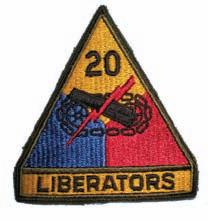
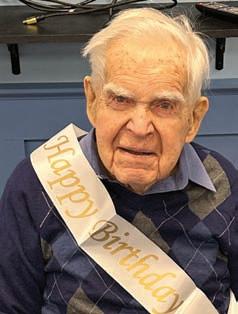
They stumbled on Dachau. There’d been reports of a camp nearby, but nothing prepared them for what they saw: thousands behind the fences, emaciated, hollow eyes flashing in the sunlight, afraid to move too close to the fence. Too many times, guards had tossed prisoners’ hats on the ground there, over the line, laughing when anyone who tried to retrieve them was torn apart by the machineguns.
His unit comprised scouts, about 3,000 men in the 33rd Cavalry Reconnaissance Squadron in the 20th Armored Division. They couldn’t stay long, maybe six hours. They’d radioed the coordinates back to HQ, to the 42nd (Rainbow) and 45th (Thunderbird) Infantry Divisions, who would somehow deal with it all. But they opened the gate. Arbeit Macht Frei, it said. Then off toward Munich. Forever after, the 20th Armored Division would be known as the Liberators
His father had served as an engineer in World War I. “When their county needs them,” he told his son, “the Paces volunteer; they’re not drafted,” he said. So, on December 7, 1942, one year after Pearl Harbor, and a month before his 19th birthday, Thurman enlisted. He took the Army Special Assessment Test. They sent him to college, but in 1944 the program was canceled. Like many others who’d enlisted and scored well on the test, he was assigned to the 33rd Cavalry Reconnaissance Squadron. They’d moved fast, into the vacuum as the Nazis retreated across Europe. From Boston to Le Havre, eleven days aboard the USS Brazil, in February of 1945. Thurman took as much time on deck as he could, face to the wind. Then deployed, light armor, jeeps, half-tracks, churn-
Thurman was there when, April 4 through 9, the division moved up the west bank of the Rhine to support the 101st and 82nd Airborne Divisions at Delhoven and Hitdorf. They fought the SS directly, killing more than 700 of them, capturing over 800 prisoners of war.
ing fast through France, Belgium, and into Germany. They took up supporting positions attached to various divisions engaged in battle, armored and infantry, testing the front, treading new ground where the waves once broke. Always moving, sleeping in dugouts, mortars whistling overhead, punctuated by the crackboom-crack of the Howitzers.
Thurman was there when, April 4 through 9, the division moved up the west bank of the Rhine to support the 101st and 82nd Airborne Divisions at Delhoven and Hitdorf. The 412th armored field battalion received a Distinguished Unit Citation for that engagement. Then, the 20th crossed the Danube on April 28 and fought hard the next day, capturing the bridge over the Paar River at Schrobenhausen intact. “I have never seen a more aggressive armored unit,” Lt. Col. Donald E. Downard, commanding officer of the 2nd Battalion, 222nd Infantry in the 42nd Division, once said. They fought the SS directly, killing more than 700 of them, capturing over 800 prisoners of war, as part of Task Force 20. They opened the hole: Munich would fall. For this victory, elements of the 20th were awarded another Distinguished Unit Citation, battle stars appearing through the fog of war.
The ghosts of Dachau still haunted him, though, like the rubble of Aachen, wasted silhouettes backlit by raging fire. They pushed on toward Austria. Up here, in the Bavarian Alps, the sun lit up the sky. There was something close to peace when he etched his initials into Hitler’s house at Berchtesgaden as if to say “I was here” at the confluence of history. He’d smile in mischievous understatement when, almost 80 years later, he’d retell the story.
They were almost upon Salzburg when word came that Germany had surrendered. Back stateside, preparations began for deployment to the Pacific theater. But the bomb ended all that. Thurman took the GI Bill to college, at Auburn University, to finish his degree in business administration.
He married his wife of 73 years, Betty Annette Drake, in 1950 and left Alabama for a position at the American Sugar Company (later AmStar Corp., owner of the Domino sugar brand), eventually retiring in 1987 as Assistant to the Corporate Treasurer, Secretary of Corporate Capital Additions, and President of U.S. Mutual Liability Insurance Company. He served his community as an elder in the Presbyterian Church and as a school superintendent.
He entered the Fraternity in 1959, raised in Lafayette Lodge 27 in Rahway, New Jersey, before demitting to Atlas Lodge 125 in Westfield, where Betty and he bought a home. They lived there until 2014. He was Master of the Lodge in 1991. On June 7, 1991, when he was Master, thirty-two Past Grand Masters showed up to Atlas Lodge, representing twenty-four jurisdictions, including China. They’d come to honor his year in the East.
He befriended Harold B. Voorhis, a foremost Mason of the era, who became his mentor, and he entered the York Rite. He was knighted in Trinity Commandery 17 in Plainfield, NJ, in 1961, serving as Commander five years later. In 1976, he was elected Grand Commander. In 1982, Grand Master of the Grand Encampment, Ned Dull, appointed him to serve as Department Commander for the Northeast Department. He was Director of the Eye Foundation from 1998 to 2002.

At the 63rd Triennial Conclave of the Grand Encampment, held in Houston in 2006, he was elected an Honorary Past Grand Master of the Grand Encampment.
The Order of the Temple was probably his favorite degree – he knighted hundreds. Even in his late nineties, he could recite the Commander’s part almost word perfect.
Despite his significant and widespread Masonic influence (see partial Masonic resume, right), you wouldn’t find him at the dignitaries’ table. He’d say something like, “I don’t want to sit with you old folks, there are young Masons to meet!” and seek out a table with an Entered Apprentice, or a young Mason, someone he’d never seen before. He wanted to greet them, to listen to them, to inspire and empower them. “My goal in life was to help young people,” he told the Rite Stuff podcast a few years back. “It gives me a warm feeling in my heart,” he said. With similar intent, he founded the Children’s Dyslexia Centers in 1994. It became the major charity of the Ancient and Accepted Scottish Rite for the Northern Jurisdiction.
His advice to new Masons was to “get active” – to be involved. If you wanted to ascend through the ranks, you need to show up and be of use, he would say. He wouldn’t tolerate nepotism. He held his friends to a higher standard; he wasn’t afraid to remove them from office if they didn’t perform. Something he’d learned in Normandy – you needed the right man for the right job. Personal feelings had nothing to do with it.
You make your own way, he must have thought, as he curled up on the floor of a bakery somewhere in Europe after a long march. Near the ovens, where the bread rose, forever changed by a smattering of yeast, a metaphor for transformation could not be lost on him.
“It was the warmest night I spent in the army,” he said. KT
Raised, Lafayette Lodge No. 27, 1959
Knighted, Trinity Commandery No. 17, 1961
Commander, 1966
Thrice Illustrious Master, Adoniram Council No. 9, 1971
Most Excellent High Priest, Lafayette Chapter No. 26, 1972
Prince of the Royal Secret (32º), AASR-NMJ, 1973
S.R.I.C.F., NJ College, 1975
Sovereign Master, Allied Masonic Degrees, New Ark Council No. 25, 1975
Red Branch of Erie, 1975
Royal Order of Scotland, 1975
Grand Commander of NJ, 1976
Legion of Honor, DeMolay, 1977
Founder of Order of Knights Preceptor for the U.S., 1977
Sovereign Preceptor, 1977-2003
Department Commander, Northeast Department, 1982-85
Puissant Sovereign, St. Quentin Conclave Red Cross of Constantine, 1984
Coroneted S.G.I.G. (33º), 1987
Grand Sovereign, United Grand Imperial Council Red Cross of Constantine, 1990
W.M., Atlas Pythagoras Lodge No. 10., 1991
Grand Chancellor, Grand College of Rites of the U.S.A., 1991 Grand Historian, M.W.G.L. NJ, 1992-95
Knight Commander of the Temple, 1992
IXº, S.R.I.C.F., 1992
Daniel Coxe Medal MWGLNJ, 1994
Honorary Past Sovereign Grand Master, Allied Masonic Degrees, 1995
Prefect, C.B.C.S., Great Priory of America, Northeast Prefecture, 1995-98
Knight Grand Cross of the Temple, 1997
General Grand Chapter, Distinguished Service Medal, 1997
Knighted in Shrewsbury Priory No. 4, Knights of the York Cross of Honor, 1997
Supreme Magus, S.R.I.C.F., 1998-2007
Great Chief, Grand Council of Knight Masons of the U.S.A., 1998
Honorary Past Supreme Magus of France, 1998
Gold Medal of Honor, Provincial Grand Lodge of Paris, France, 1998
Great Prior, C.B.C.S., Great Priory of America, 1999
Elected to Supreme Council, 1999
Honorary Past Grand Preceptor, Holy Royal Arch Knight
Templar Priests of the U.S.A., 1999
Order of the Purple Cross, York Rite Sovereign College, 2000
Honorary Deputy Grand Master, Grand Lodge of Portugal, 2002
Honorary Past Supreme Magus of Portugal, 2002
Medal of Honor, C.B.C.S., Great Priory of France, 2002
Supreme Council Medal of Honor, AASR-NJ, 2004
Honorary Past Supreme Magus of Romania, 2005
Honorary Past Grand Master of the Grand Encampment, 2006
Honorary Past Most Illustrious Grand Master of the Grand Council of New Jersey, 2022
Honorary Past Grand High Priest of the Grand Chapter of New Jersey, 2023
